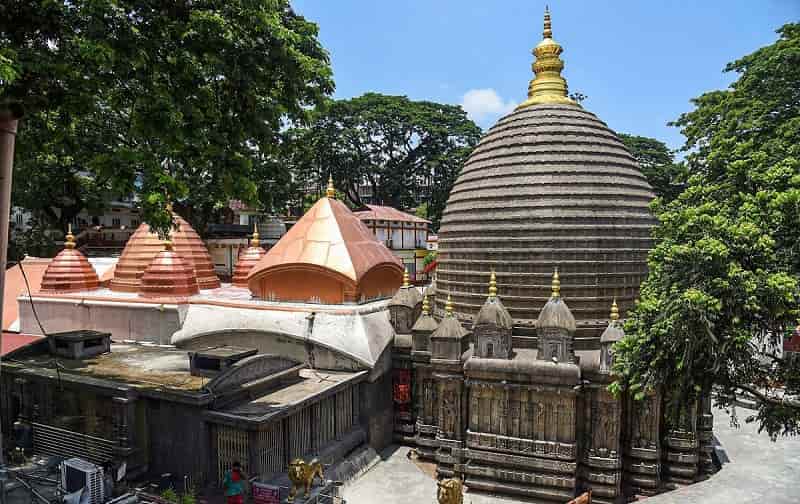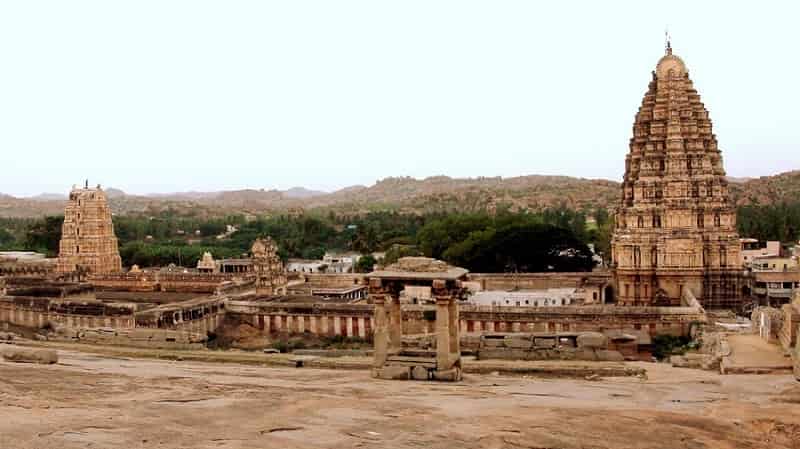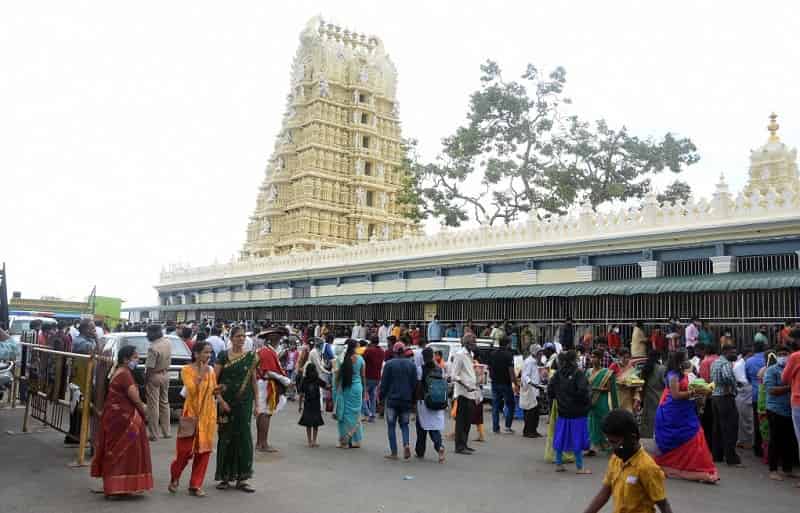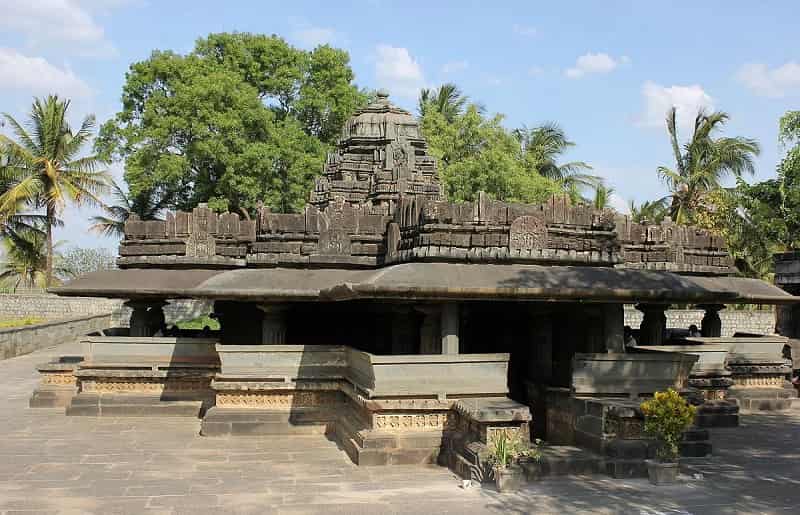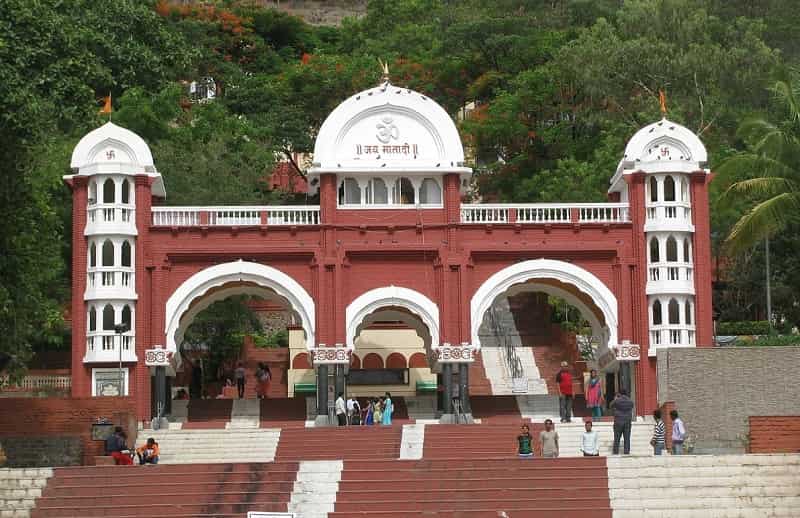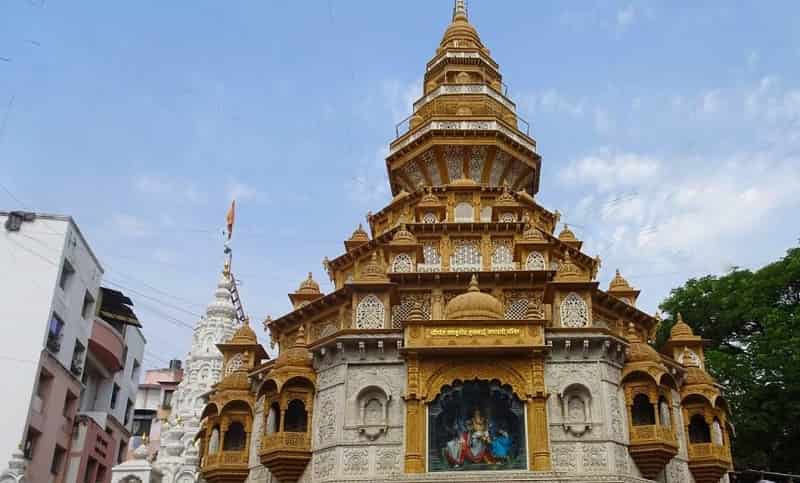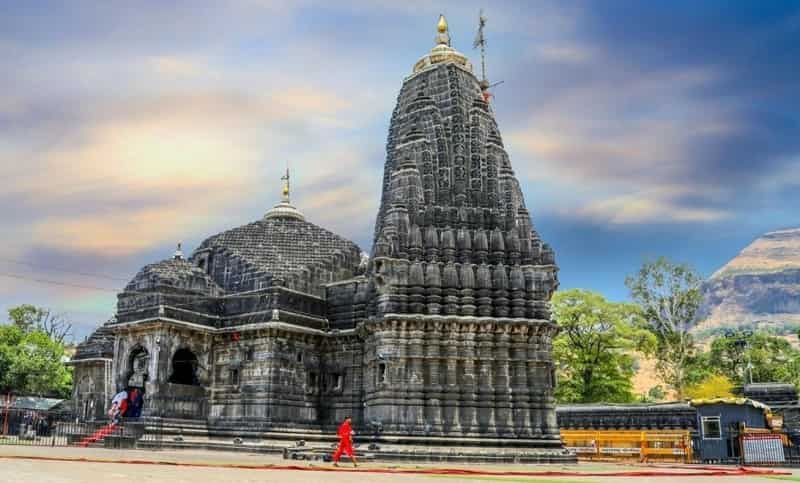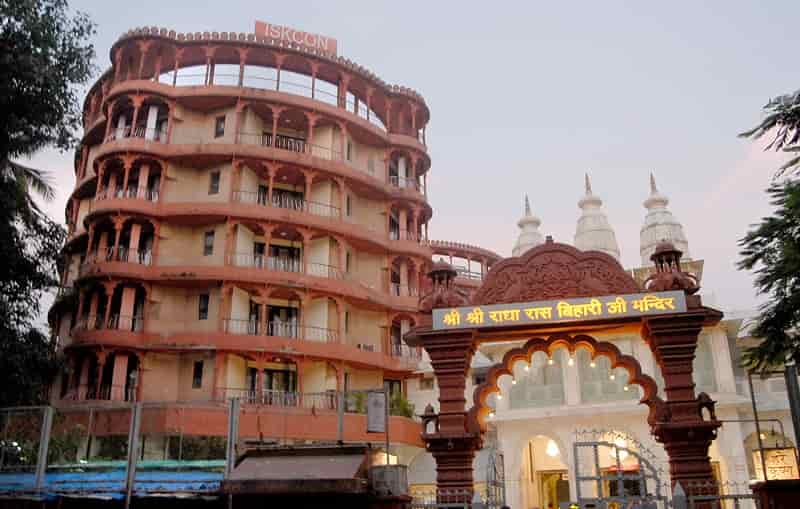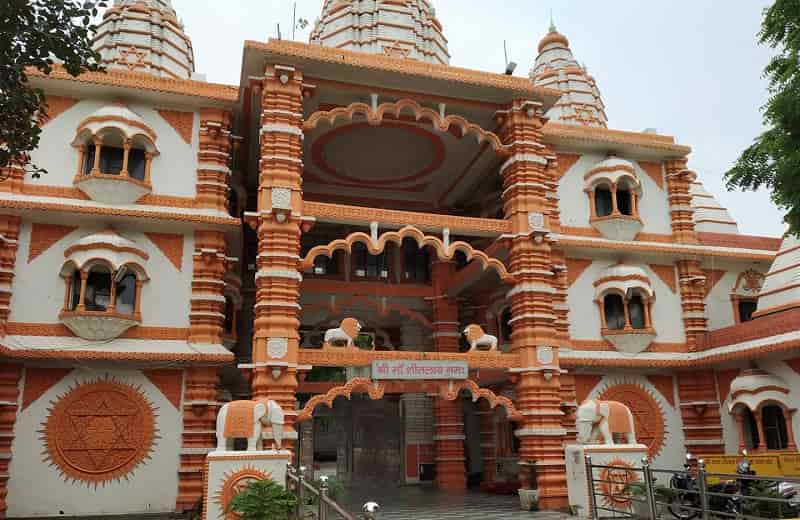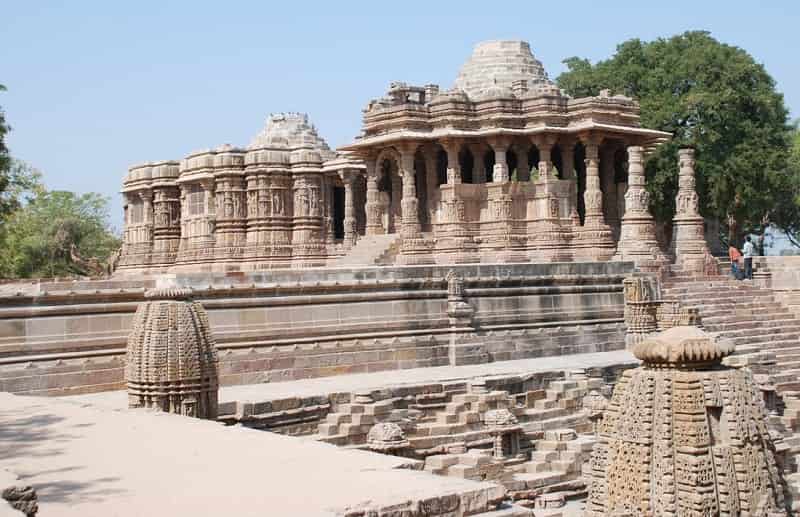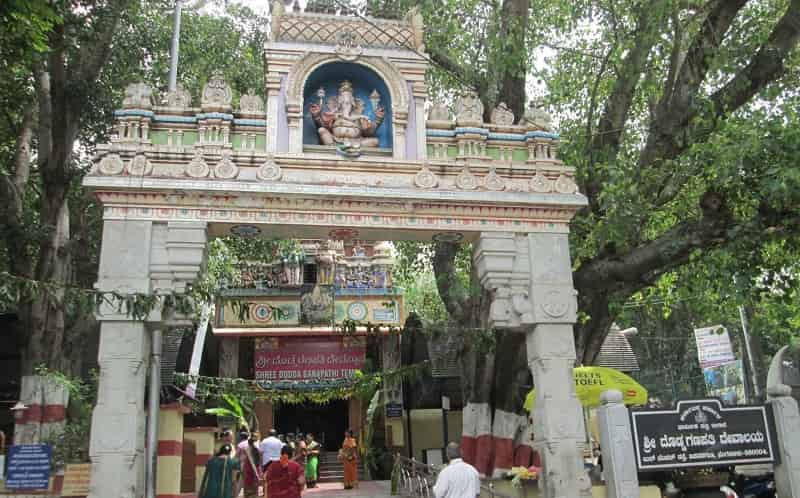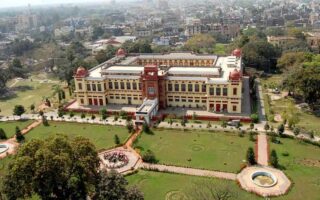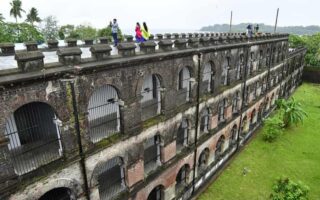India is a very diverse country, some of the famous things about India is its religion, culture, customs and belief. People from all over the world visit India at least once to see the culture and ritual which are famous all over the world. Because it’s a diverse nation so tourists and visitors do see the overlap of culture into one. Another thing which makes India famous all around the globe is the religious temples in India. There are about hundreds of ancient temples which are filled with their own amazing history.
In India, one can easily see ancient temples and some of them are also associated with UNESCO World Heritage Site. There are many examples of such visitors who travel to this country to attain eternal peace and stayed here forever. This represents the strong bond of culture, peace, spirituality and religion.
Stay with us to experience 54 most religious temples in India that you should visit:
Meenakshi Amman Temple, Madurai, Tamil Nadu
- Deity: Goddess Meenakshi
- When to visit: Between October to March
- Timings: 9am–7pm
- Entry fees: No entry fee
- Time required: 2 to 3 hours
- Travel tip: Do check weather before planning.
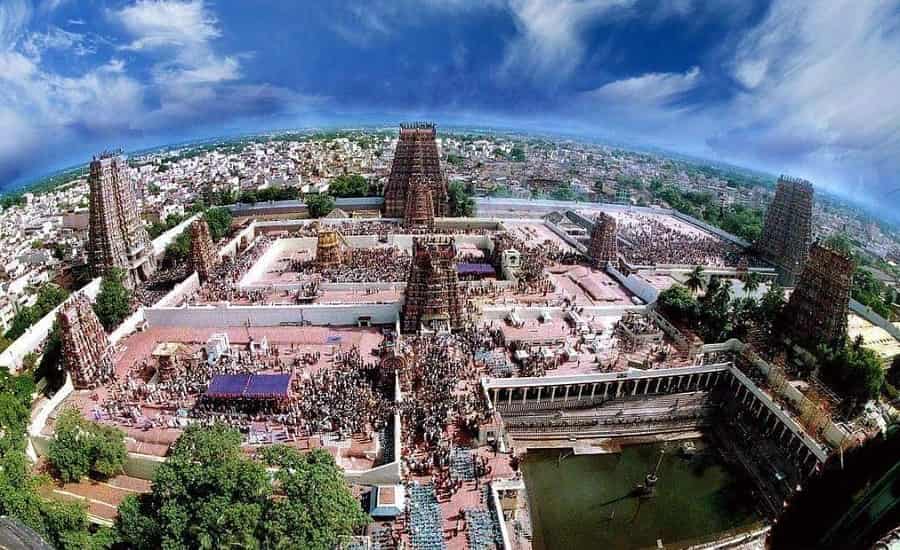
Meenakshi Amman Temple or widely known as The Meenakshi Temple is Hindu religious temple which sits near the river Vaigai. The temple is present in the city called Madurai which is in the state named Tamil Nadu. The area of the entire temple is around 15 acres. Primarily the temple is dedicated to the goddess Parvati and Lord Shiva. The history of the temple is 2500 years old, it was constructed in the 6th century B.C.
However, in the 14th century, a Muslim ruler destroyed the temple. But later it was rebuilt by the efforts of the Vijayanagara Empire. Meenakshi Temple has a huge 14 gopurams which are also known as the entrance tower altogether combining with around 33000 different carve idol of Lord Shiva and Parvati. Inside the temple, it houses a thousand pillar hall which consists of 985 pillars that too heavily carved which is a treat to watch.
Kailashanatha Temple, Aurangabad, Maharashtra
- Deity: Kailashanatha (Shiva)
- Timings: 6am–7pm
- Entry fees:50
- Time required: 3 to 4 hours
- When to visit: In winters or Monsoon
- Travel tip: No other things or activity to do.
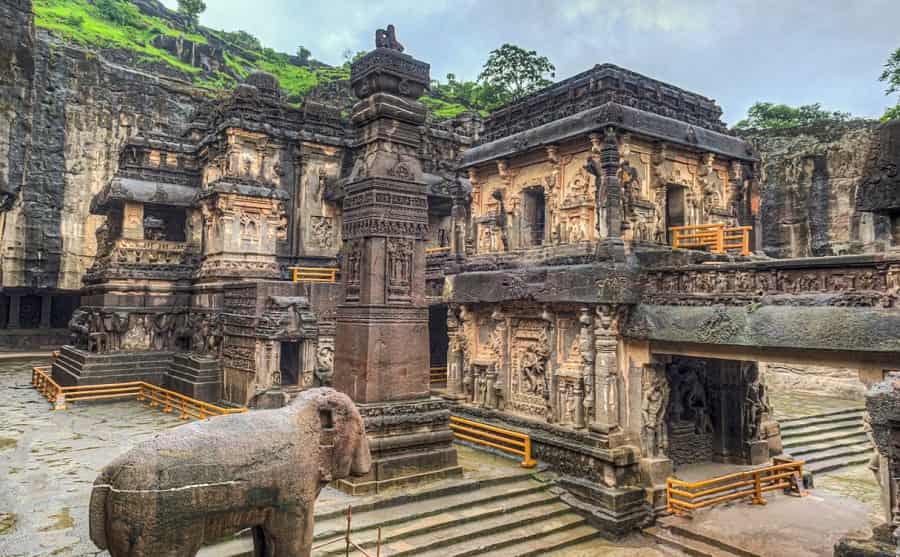
Have you ever seen a temple which is entirely carved through a single rock if not, then you must consider visiting the kailasanatha Temple. It is one of the largest temples in the world which is made out of a single rock. Every year thousands of people from all over the world visit this Buddhist, Jain and Hindu temple. It was built around 760 A.D. by the king Krishna I and took around 18 years to get completed.
It is estimated that around 200,000 tonnes of stones and rocks were carved out to construct such a big structure. The temple is a perfect example of an architectural pattern of style with the combination of sculptural style. The entire temple is a resemblance of Mountain Kailash or Himalayan where God Shiva resides. However, the lower part or base part of the temple showcases the entire story of Ramayana and Mahabharata which are engraved over here.
Tungnath Temple, Rudraprayag, Uttarakhand
- Deity: Lord Shiva
- Timings: 6:00 AM – 7:00 PM
- Entry fees: No entry fee
- Time required: 2-3 hours
- When to visit: In May
- Travel tip: Check the public transport and status of connecting road.
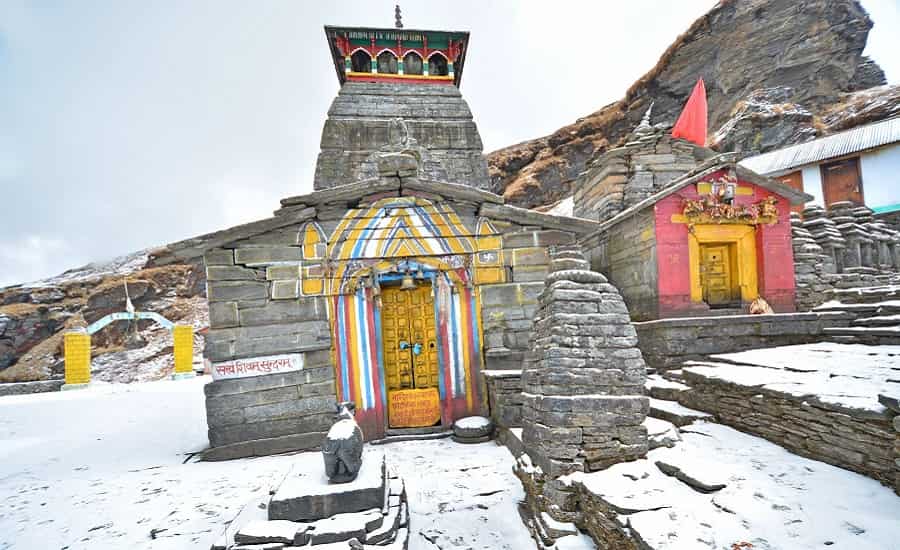
The Tungnath Temple is located at a height of 12,073 feet above the summit of Chandrashila. Tungnath Temple is dedicated to Lord Shiva. It is the most important Shiva temple in that particular range. There is a total of 5 temple of Shiva which represents each part of Lord Shiva. According to Hindu mythology, the Pandavas (key characters from Mahabharata) were searching for Lord Shiva and Shiva was avoiding them. Later Shiva transformed himself into five parts in five different locations.
After knowing this Pandavas made five temples where Lord Shiva was hiding. Thus Tungnath is one of the most important as well as it is listed one of the highest temples of Shiva. All five temples is known as Panch Kedar. The first temple is Kedarnath, Tungnath, Rudranath, Madhyamaheshwar, and Kalpeshwar Temples. It is one of the most ancient, historical and religious temples in India.
- Also Read: Famous Hindu Temples in Uttarakhand
Adi Kumbeswarar Temple, Kumbakonam, Tamil Nadu
- Deity: Lord Shiva
- Timings: 6am–9:30pm
- Entry fees: No entry fee
- Time required: 2 hours
- When to visit: Open all seasons
- Travel tip: None.
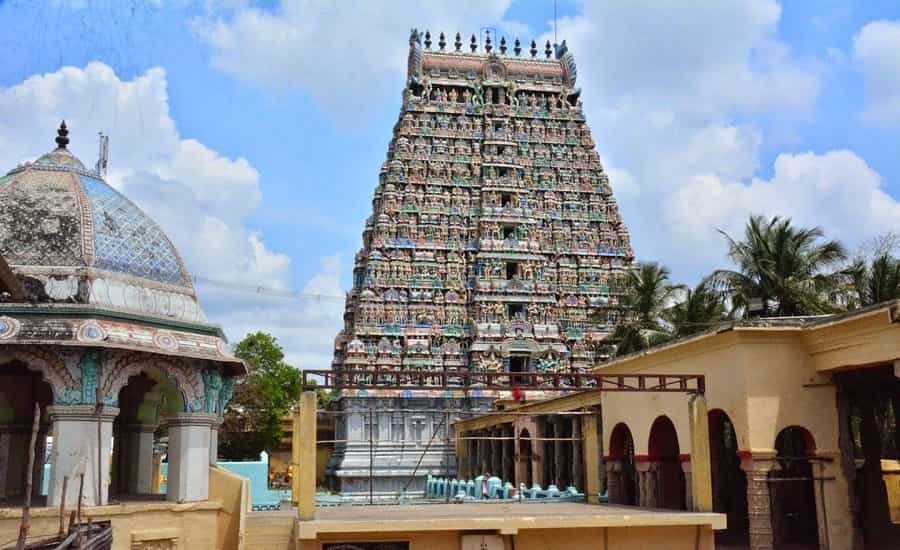
On your trip to India, you will see many ancient and religious temples but the Adi Kumbeswarar Temple is considered to be built around the 7th century. In this temple, the devotees worship Lord Shiva and Goddess Parvati. Devotees worship a Lingam here which represents the presence of Lord Shiva. The entire temple consists of four gopurams or widely understood as the gateways to entire the temple. The height of the primary temple is around 125 feet which are approximately 9 storeys.
The temple also consists of many halls, where religious practice is conducted. Here one of the noticeable things is that one of the halls has 27 stars with the combination of 12 zodiac signs and all these are carved into one single stone. And hosting all these is the campus of this temple which is around 30,181 sq ft in area. Some of the notable attractions of the temple are the Mahamaham festival and different sculptures that are inside the temple.
Konark Sun Temple, Puri, Odisha
- Deity: Sun God Surya
- Timings: 6am–8pm
- Entry fees:40
- Time required: 2 hours
- When to visit: Open all seasons
- Travel tip: None.
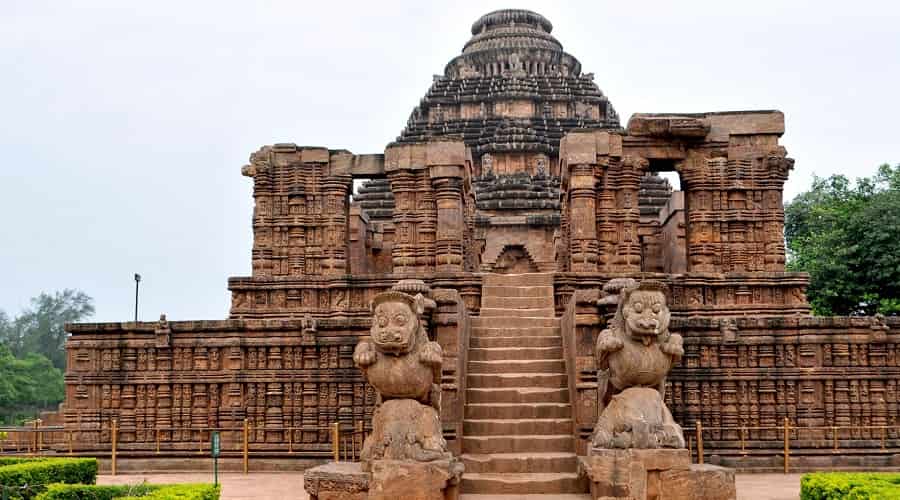
The state Odisha is famous for the Sun Temple in Konark or widely known as Konark Sun Temple. In 1984, this pilgrimage is listed as a UNESCO World Heritage Site. This temple is dedicated to God Sun from Hindu mythology. And according to the records, it is the only temple which was constructed before the 15th century and which is still standing after being destroyed so many times. The design and architecture is the main aspect of the temple. Devotees and tourist come from all over the world to witness this great architectural work done many centuries ago.
The complete construction is done in the form of the chariot of the God Sun. Hindu mythology represents Sun as a lord and the Lord Sun travel on a chariot which is pulled with seven horses. And similarly here in the Konark Sun Temple, you will see four horses on one side and three on another. The entire temple is filled with iron and stones and according to legends, there was a huge magnet on the centre of the temple which balances the entire temple. But later it was destroyed and that’s the reason for the damages of this Sun temple. Overall it’s a place that you must visit.
Badrinath Temple, Chamoli, Uttarakhand
- Deity: Lord Vishnu
- Timings: 6am–8pm
- Entry fees: No entry fee
- Time required: 2-3 hours
- When to visit: From April to June, September to November
- Travel tip: Check weather conditions and try to attend various festivals.
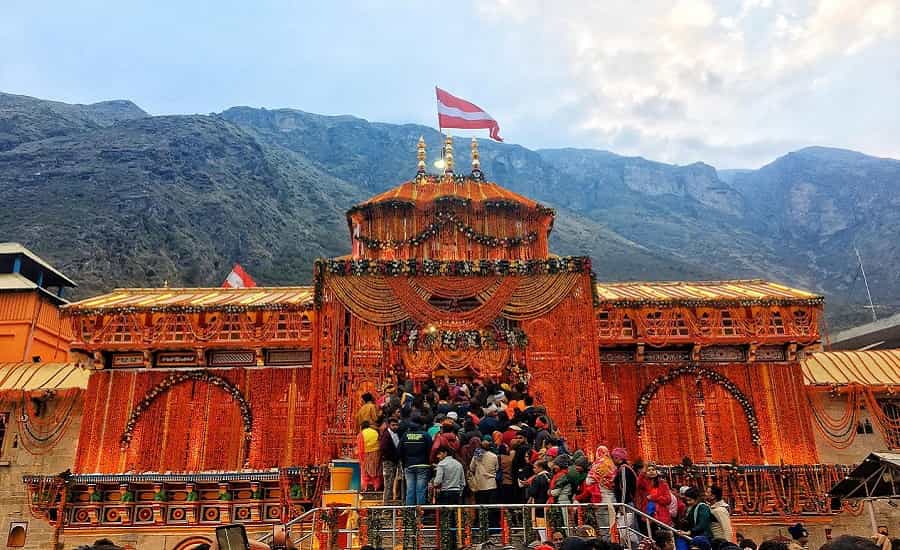
The temple of Badrinath in Uttarakhand is known as one of the most visited temples of India. It is the temple of Lord Vishnu. Lord Vishnu is known as the protector of the entire Universe. There are 108 temples of Lord Vishnu in India and Badrinath is one of the most crucial amongst all. Because of its location, the temple is open for the devotees only for the period of six months from April to November.
The idol of Lord Vishnu present in this temple is made up of black granite. However, Lord Vishnu has many temples across the country but there are four major temples which are also known as Char Dham. All four temples are present in four directions East, West, North and South. Four temples are Badrinath Temple, Dwarkadhish Temple, Rameshwaram and Jagannath Temple respectively.
Also Read: Opening and Closing Dates of Badrinath Temple
Golden Temple, Amritsar, Punjab
- Deity: Hari (God)
- Timings: 5am–10pm
- Entry fees: No entry fee
- Time required: 2-3 hours
- When to visit: Open all season
- Travel tip: None.
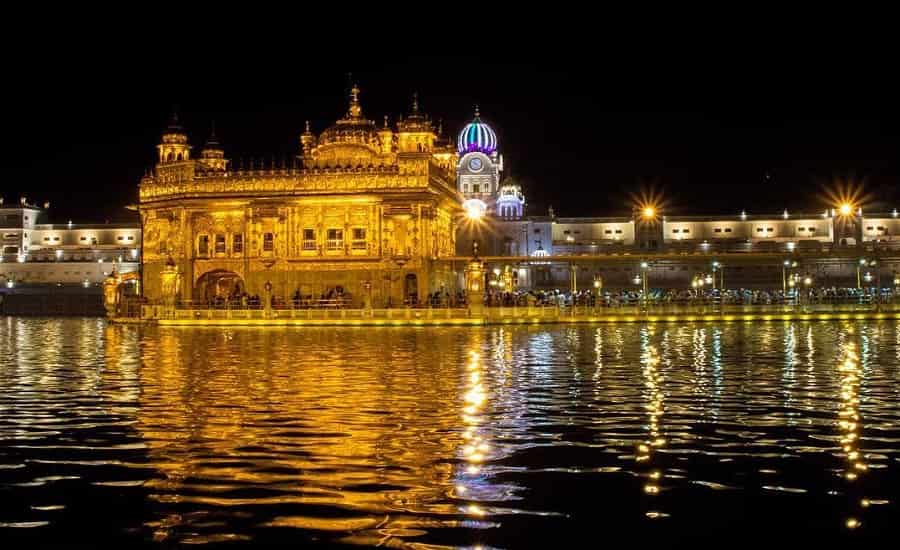
In India, Sikhism is a religion which is followed by Sikh people. It is one of the most reputed and most followed religions in India. Guru Nanak Dev Ji started Sikhism in the 15th century. In the year 1589, the construction of the Golden Temple was started. In early days the temple was built with normal stones and other material but Mughals destroyed it, later Maharaja Ranjit Singh again re-built the temple with copper and marble. Later the gold foil was layered over the temple due to which it was named the Golden Temple of Amritsar.
There are two main pilgrimages of Sikhism one is the Golden Temple and another is the Kartarpur Sahib Corridor which is in Pakistan. The Golden Temple is in the centre of a man-made pool. The pool is not so deep, its only 5.1 meters. Daily ceremonies are performed inside the temple and also the Langar on a regular basis. Langar is a free food serving kitchen who serves food to everyone who visits the temple.
Badami Cave, Bagalkot, Karnataka
- Deity: Lord Shiva, Lord Vishnu & Jain Tirthankaras
- Timings: 9am–5:30pm
- Entry fees: INR 30 for India, INR 500 for foreigners
- Time required: 5-6 hours
- When to visit: From July to March
- Travel tip: Not proper road connectivity.
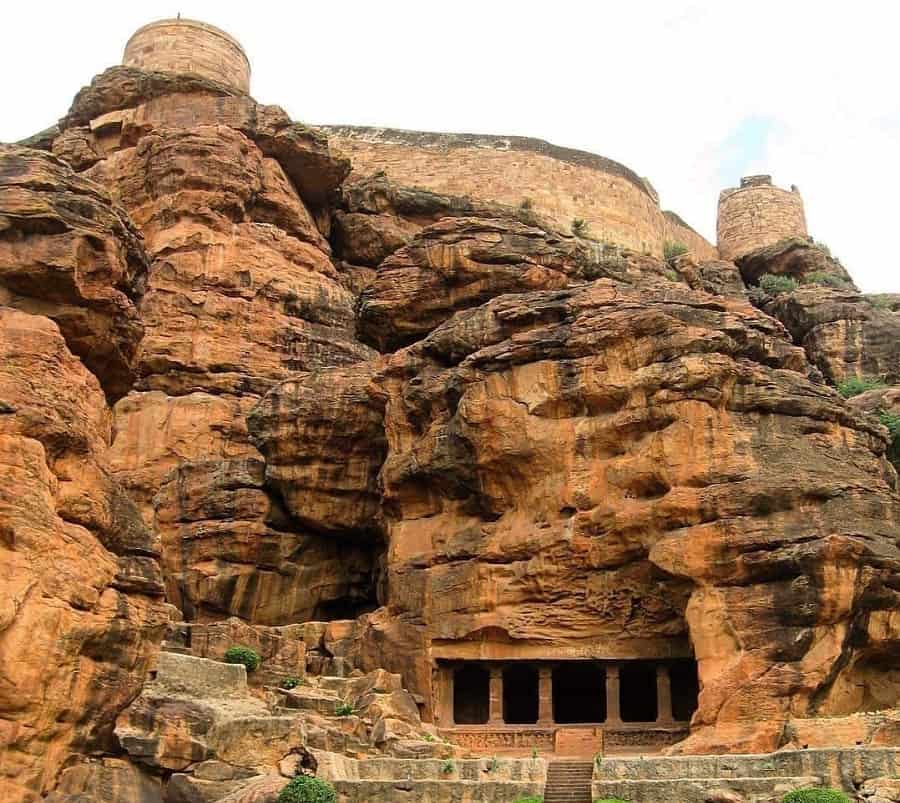
The exact date of this temple is not on records but it is believed that the Badami Caves existed from the 6th century. There are four caves or it can be said that four caves are the dedicated temple. Badami Cave Temple is an example of a mixed culture. Here you will find the temple of Lord Vishnu, Shiva and Jain. All the images and idol present here is a perfect illustration of religious temples in India.
Most of the architectural work and carving is done on rocks which illustrates the dedication of people towards their Gods. Cave 1 has images, sculptures of Lord Shiva in his Nataraja form. Cave 2 and 3 tell about the Lord Vishnu and his avatars. And cave 4 has images of Jainism. These caves are a strong contender for the UNESCO World Heritage Site.
Airavatesvara Temple, Kumbakonam, Tamil Nadu
- Deity: Lord Shiva
- Timings: 6am–8:00pm
- Entry fees: No entry fee
- Time required: 1-2 hours
- When to visit: From November to February
- Travel tip: None.
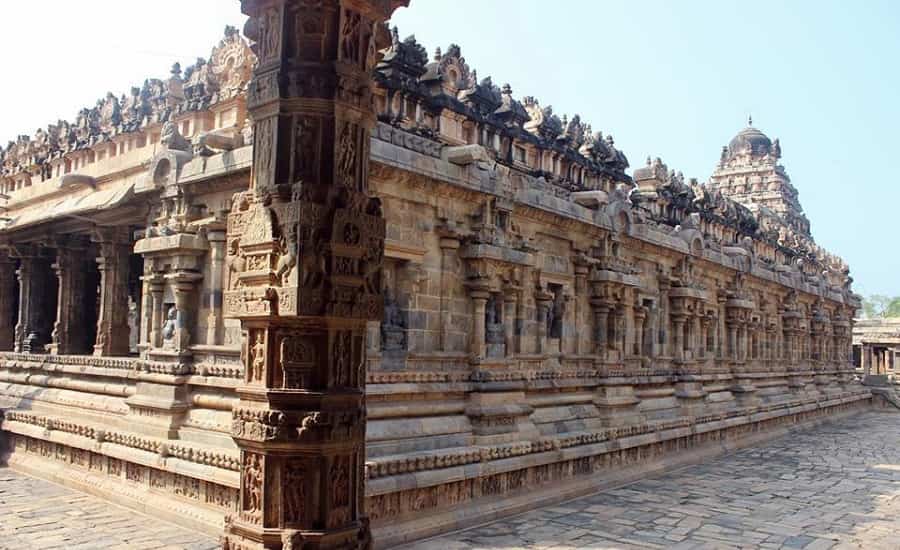
The Airavatesvara Temple is present in a town named Darasuram which is near Kumbakonam. This temple was built in Tamil Nadu in the 12th century and it is listed as a UNESCO World Heritage Site. Airavatesvara Temple is made in the Dravidian style of architecture. This style represents the South-Indian art of carving. Even there are three more temples that are made simultaneously with Airavatesvara Temple, all these temples are also listed in UNESCO.
However, the Airavatesvara Temple is a Hindu Temple which is dedicated to Lord Shiva. The temple is constructed with stones and it sits on a chariot like arrangement which looks amazing and reflects the intricate level of design. There are also some small temples in the complex which represents the idol and image of several other Gods like Goddess Durga, Saraswati, Ganesh, etc. Several tourists visit this magnificent site every year.
Shree Jagannath Temple, Puri, Odisha
- Deity: Lord Jagannath (Lord Vishnu)
- Timings: 5am–10:00pm
- Entry fees: No entry fee
- Time required: 30 minutes to 1 hour
- When to visit: June or July when the Rath Yatra is organised
- Travel tip: None.
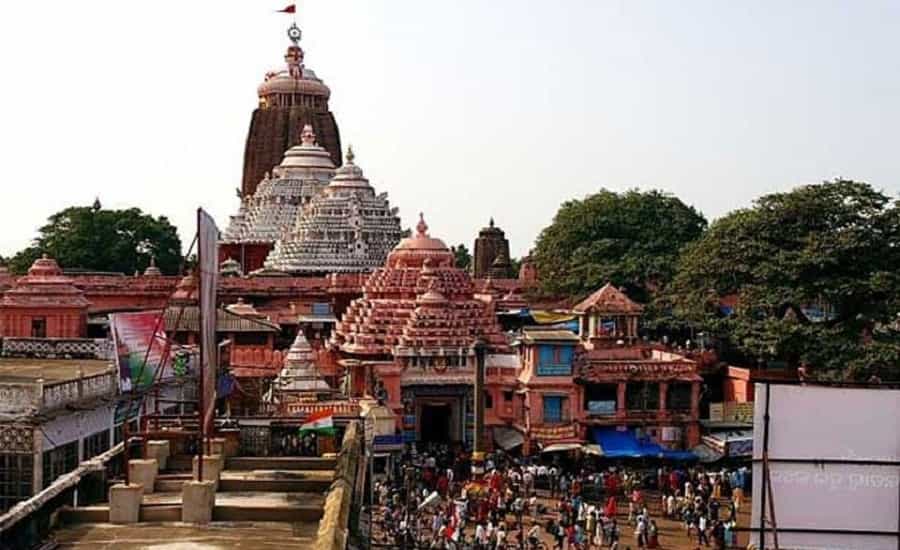
The temple of Shree Jagannath Puri is present in a state called Odisha. It is dedicated to a form of Lord Vishnu from Hindu mythology. Temple was constructed somewhat between 11 and 12th century. It is also one of the pilgrimage sites for devotees as it is a part of Char Dham. There are three idols of Gods which are worshipped simultaneously. The first idol is of Jagannath and second and third is of Balabhadra and Subhadra. Devotees have a special place for Jagannath Temple in their heart that’s why it is one of the most religious temples in India.
Every year in the month of June or July Shree Jagannath were taken out of the temple to Shri Gundicha Temple which is around 3 km away from the main temple. This scenario is called Rath Yatra, huge chariots are made for god and they are pulled by devotees. Shree Jagannath stays there for 9 days and then return to their original place. Devotees from all around the world attend this festival.
Shirdi Shai Baba Temple, Maharashtra
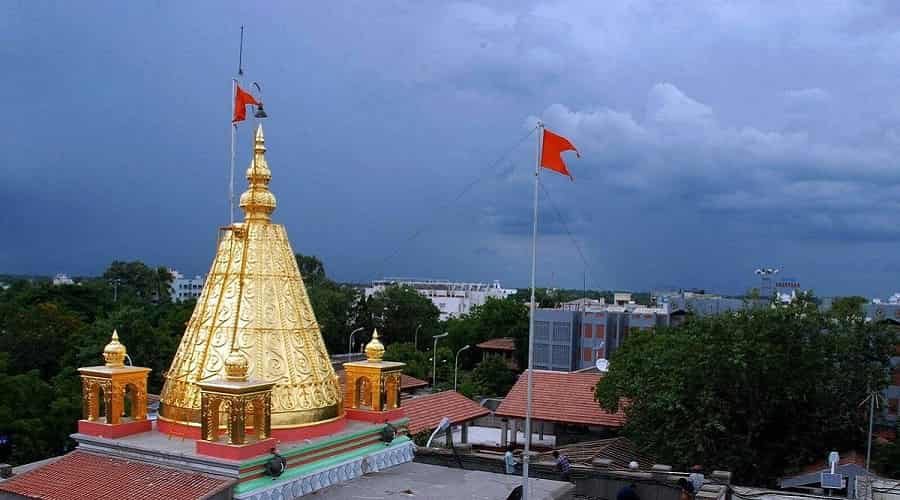
Shirdi Shai Baba is one of the Richest Temples in India receiving donations up to 350 Crores every year. It is the Holy Shrine of Sai Baba and called as the pilgrimage for his followers. There are millions of devotees, no matter of their religion come to the temple every year. The temple is situated at Shirdi which is nearly 300 KM away from Mumbai.
- Ideal time to visit: From December to February.
Kedarnath Temple, Uttarakhand
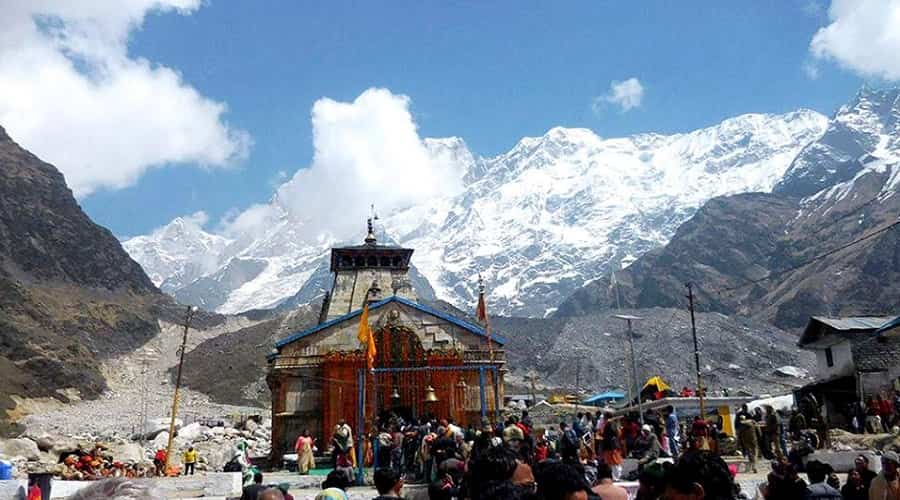
Kedarnath is one of the Twelve Jyotirlinga temples located at a height of 3583m. It is considered as world’s most peaceful Hindu shrines. The temple was built by the great Hindu monk Adi Shankaracharya during the 8th century AD and have great importance for the Hindu pilgrims. The devotees have to follow the 14 km long trek from Gaurikund to the reach the temple. This temple is the most distant shrine of the Chota Chardham tourist circuit.
- Ideal time to visit: From May to October
Amarnath Cave Temple, Jammu and Kashmir
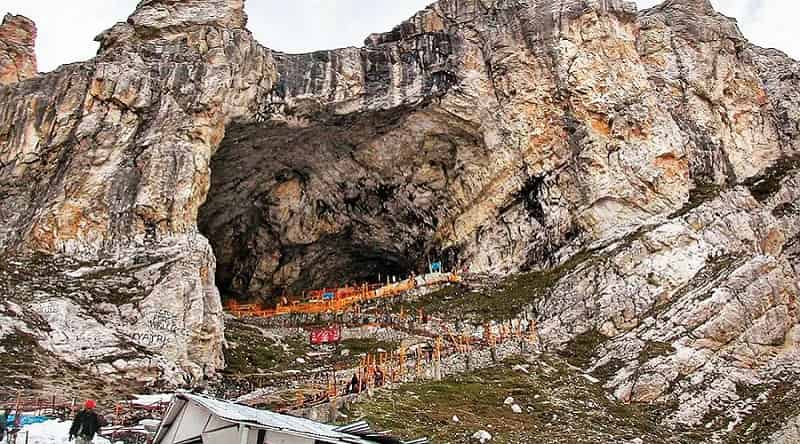
In order to reach the Amarnath Cave Temple, there is a need of mental and physical toughness. The Trek to the temple is challenging, beautiful and is hard to access. Amarnath Temple is situated in the state of Jammu and Kashmir at an altitude of 3888m. It is one of the most famous Cave Temples in India gathering a great crowd during the annual Amarnath Yatra. The main thing that attracts the devotees to the temple is that is its naturally formed Ice Lingam whose size changes with the waxes of the moon and changing seasons.
- Ideal time to visit: From May to August
Shikhar Ji Temple, Jharkhand
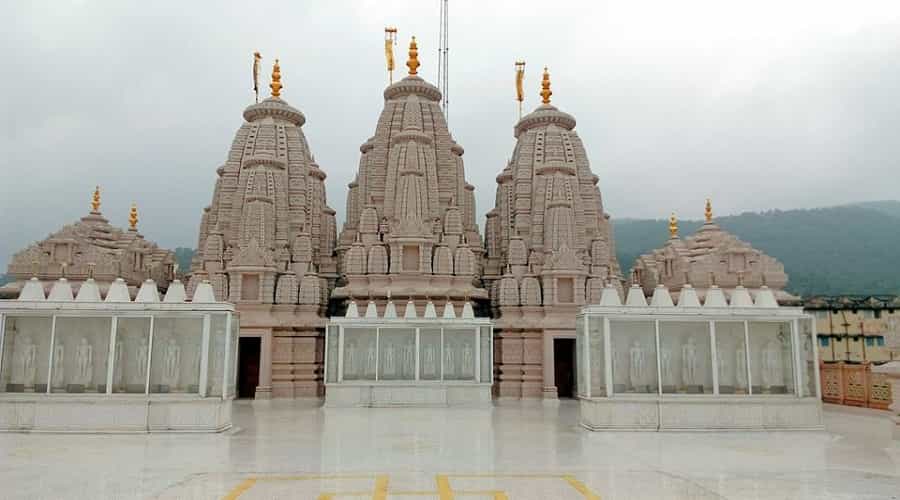
Shikhar Ji Temple is situated in the Parasnath Hill at a height of 1350m and known as one of the most visited temples for the Jainism followers. The devotees have to complete a trek of 28Km from the base camp at the Madhuban. The trek consists of deep ascends and steeply ascends at many different spots. It is famous by the name of Teerthraj and considered as the most sacred temple among the Jainism.
- Ideal time to visit: From October to March
Vaishno Devi Temple, Jammu
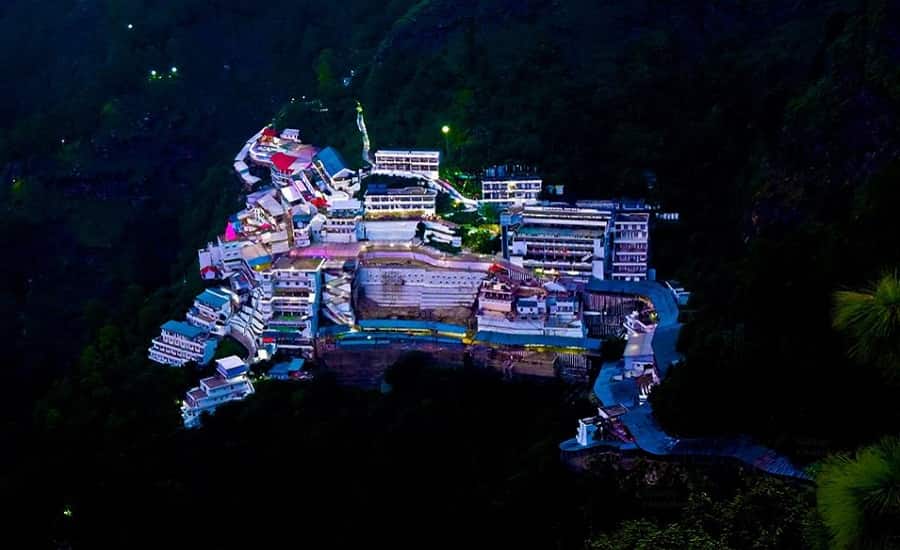
Vaishno Devi Mandir is one of the most visited Temples in India and dedicates to the Mata Vaishno Devi. This temple has a great space in the heart of the Hindu devotees and most of them visit it at least once in a lifetime. There is a need of a Yatra Registration card to visit the temple, which is available for free at the Katra Bus Station. The people can also obtain it online by paying a price of Rs. 50 per person. The temple is located at a height of 5,200 feet and devotees have to follow 8 Km Trek to reach it.
- Ideal time to visit: From March to October
Rameshwaram Temple, Tamil Nadu
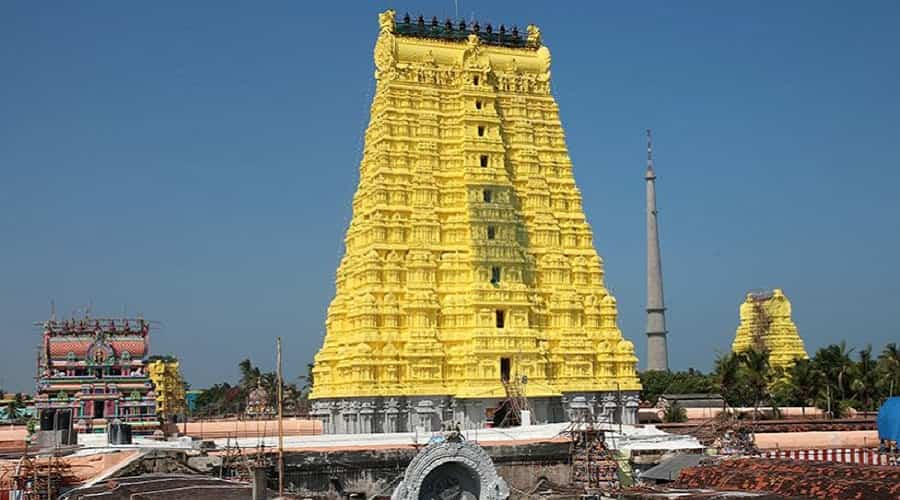
Rameshwaram Temple situated at the end of the Indian Peninsula, which is separated from mainland India. The journey to reach the temple is an exciting one and offers a fulfilling experience. As per Hindu mythology, a bridge( Ram Setu) was built by Lord Rama to rescue Sita from Ravana. From that time, the shorelines of the sea are Quiet as a sea god promised it to Lord Rama to pave the way in order to build a bridge. It is often called as the Banaras of South by the people.
- Ideal time to visit: From October to April
Dwarkadhish Temple, Gujarat
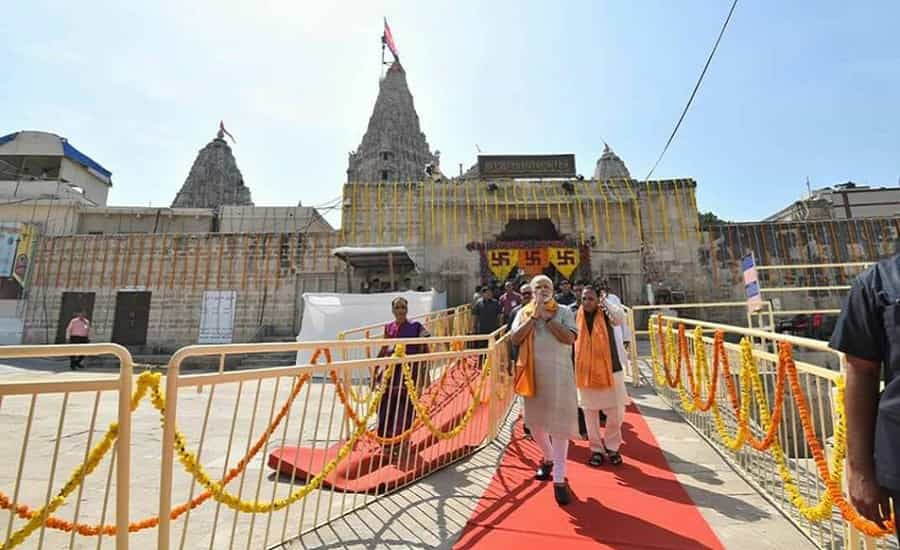
Dwarkadhish Temple was built 2,500 years ago and dedicates to Lord Krishna. The temple is part of the Char Dham Pilgrimage in the west along with the Badrinath of the north, Jagannath Puri of the west and Rameshwaram of the South. The temple has a Five Storey Structure having 72 pillars, which supports it. It is pure and clean considering the fact that it was built two and a half centuries ago.
- Ideal time to visit: In the winter months of October to March
Siddhivinayak Temple, Mumbai
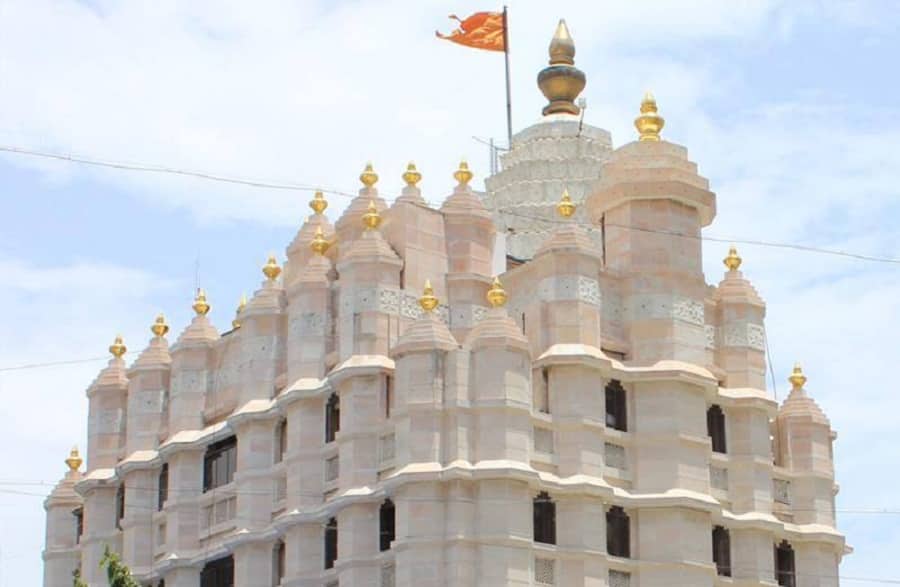
It is one of the most Famous Temples in India located in Mumbai. The Temple is dedicated to Lord Ganesha and is also the richest temple in Mumbai. The Temple has got a celebrity status among the people as it is often visited by a number of Indian Celebrities. There are more than thousands of devotees visit Siddhivinayak Temple, especially on Tuesday. Some of them even reach the temple by Barefoot Walking throughout the night. The special occasions such as Ganesh Chaturthi, Diwali and New Year’s Day are celebrated in the temple and attracts lots of devotees from all over the country.
- Ideal time to visit: All the months around the year.
Tirupati Balaji Temple, Andhra Pradesh
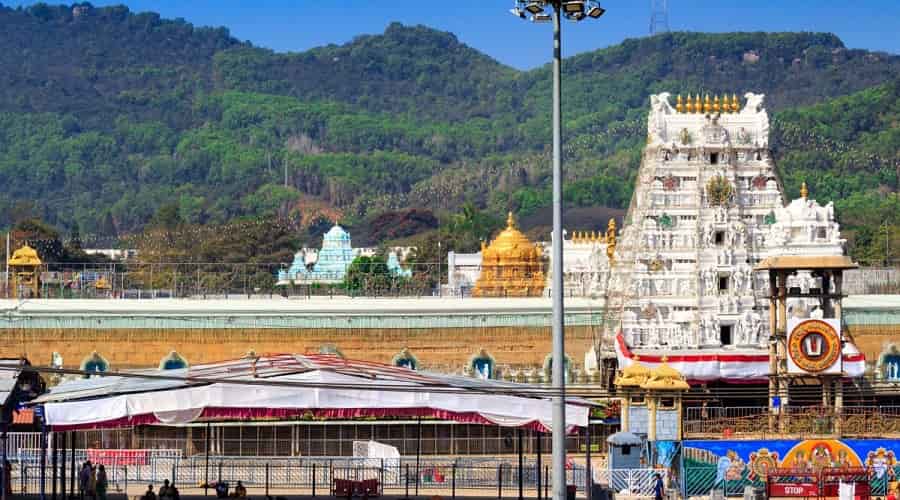
Tirupati Balaji, also known as Tirumala Venkateswara is the most visited temple of India and gets nearly 50,000 visitors daily. In addition to this, it is also the world’s most visited temple of the worship. Once it was the wealthiest temple of the world until a big amount of treasure found at the Sree Padmanabhaswamy in Kerala. As per the temple records, the people donate gold of more than 3,000 Kgs every year.
- Ideal time to visit: In the months of November to March
Kartik Swami Temple, Uttarakhand
Kartik Swami Temple is situated at a height of 3050m above the sea level and dedicated to Kartikeya, the elder son of Lord Shiva and Parvati. The temple is located Picture Perfect Setting and stands apart from all the other temples because of its Route Leading to the premise of the temple. According to ancient myths, this is the place where Kartikeya was defeated by his younger brother Ganesha and he sacrifices his bones to his father Shiva to get them out of anger.
- Ideal time to visit: From October to June
Kashi Vishwanath Temple, Varanasi
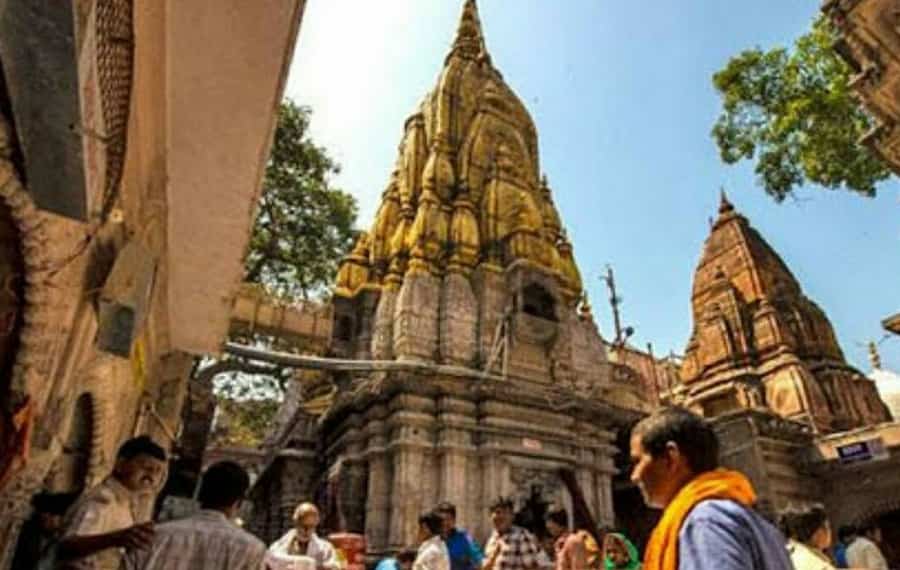
Kashi Vishwanath Temple was built by Maharani Ahilyabai Holkar in 1780 and regarded as one of the holiest Temples in India. The temple is dedicated to Lord Shiva and is one among 12 Jyotirlinga Temples in India. The temple stands on West end of Holy River Ganges. It is believed that a bath in the Holy waters of Ganga can make a human free from the sins of a lifetime. The main thing that attracts millions of devotees to this temple is its 15.5 meters high gold spire and 3 domes, which was constructed using Pure Gold.
- Ideal time to visit: From October to March
Akshardham Temple, Delhi
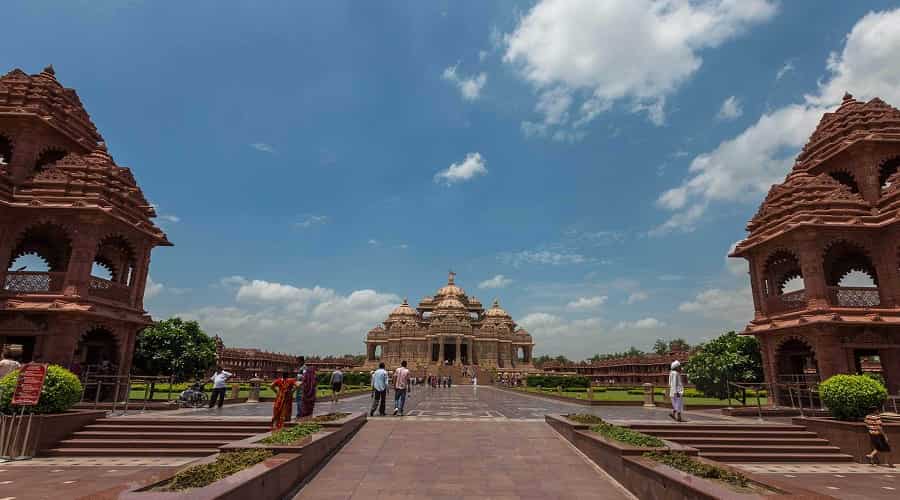
Akshardham Temple is a magnificent temple displaying the millennia of the traditional Hindu and Indian culture, architecture and spirituality. It is one of the most popular tourist destinations in Delhi because thousands of people visit it every day. The men behind the idea of this temple were Pramukh Swami Maharaj, the spiritual head of the Bochasanwasi Shri Akshar Purushottam Swaminarayan Sanstha. It took 3,000 volunteers from the organization to construct this temple.
- Ideal time to visit: All Around the Year, except extreme summer.
Somnath Temple, Gujarat
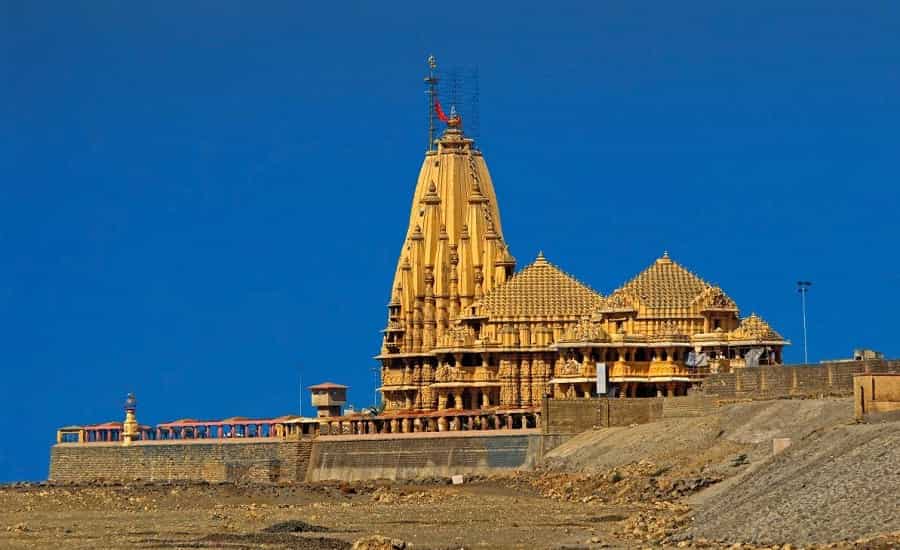
As per myths, it is believed that the Somnath temple has built by the Lord of Moon (Chandrama) when his prayers listened by Lord Shiva. He also freed the Lord of Moon from the curse of waning given to him by Daksh, who was his father-in-law. Since its construction, the temple has been modified many times before its last restoration in 1947. Somnath temple adorns the vibrant state of Gujarat.
- Ideal time to visit: From November to February
Gangotri Temple, Uttarakhand
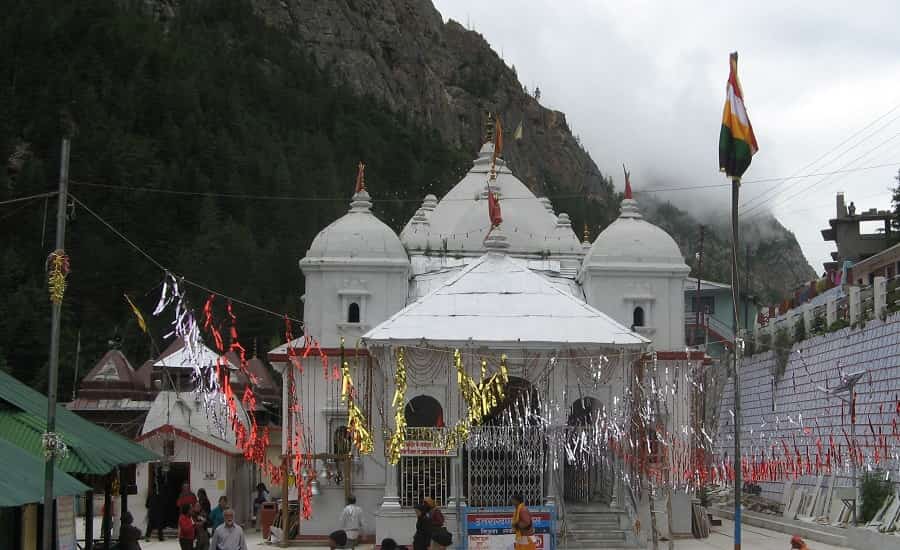
Gangotri Temple is a Historical Divine Place, which was built in the 18th century using white granite. At this temple, the sacred origin of the Ganga Maa is worshiped. The temple is located in the district of Uttarkashi in Uttarakhand. The temple generally gets opened up in the month of April or May every year, when an Idol of Ganga Maa bought back from the Mukhyamath temple. This idol travels back to the Mukhyamath temple on Diwali every year. The visitors who also love adventure can Trek up to the first point of origin of Holy Ganges, in the Lofty Himalayas.
- Ideal month to visit: From May to August
Yamunotri Temple
- Address: Yamunotri, Uttarkashi, Uttarakhand 249141
- Deity: Goddess Yamuna
- Timings: 6 am – 8 pm
- Entry Fee: No entry fee
- Visit Duration: 2-3 hours
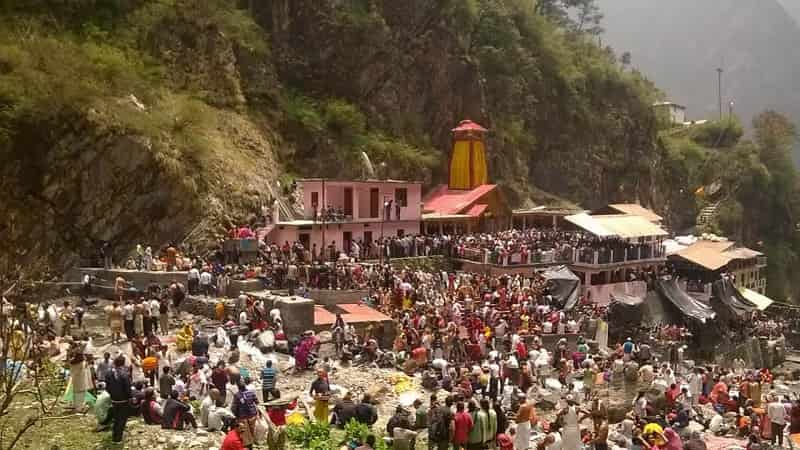
Yamunotri is dedicated to Goddess Yamuna and is located atop the Bandarpoonch Peak at an altitude of 3,165 m above sea level. Yamunotri is the source of the river Yamuna which originates from the Champasar Glacier 1 Km ahead of the shrine. The temple of Yamunotri was built by Maharani Guleria of Jaipur in the 19th century. Yamunotri is said to have been the home of the ancient sage Asit Muni.
Lingaraja Temple, Orissa
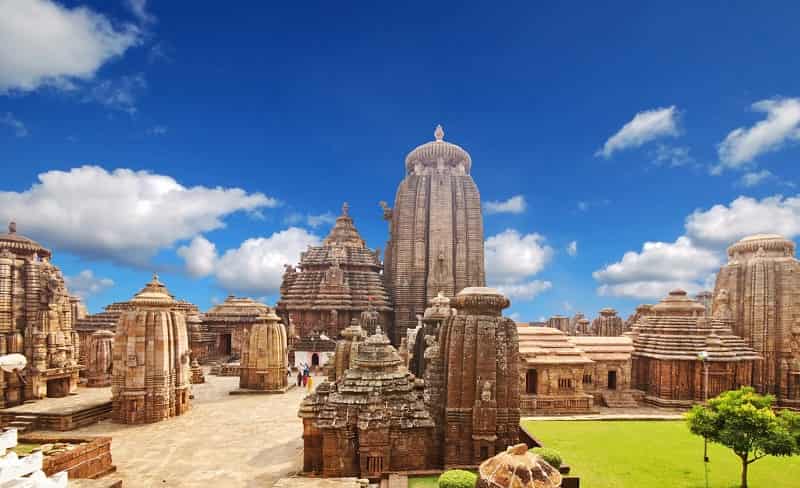
Lingaraja Temple is one of the Oldest Temples in India representing Lord Shiva. It is also the largest temple in the Temple City of India- Bhubaneshwar. It is not only religious devotees who get attracted by the temple as there are many historians visit this temple every year due to its typical Architectural Style of Kalinga. Along with Lord Shiva, the temple also symbolizes Lord Vishnu. There is also a large lake named as Bindu Sagar Lake touches the temple from one side. The people from non-Hindu religions are not allowed to enter the Lingaraja Temple, but they can see the brilliant structures from a platform outside it.
- Ideal time to visit: From January to March
Someshwara Temple
- Address: Someshwara Temple Rd, Someshwarpura, Halasuru 560008 Bangalore, Karnataka
- Timings: 6 am to 9 pm
- Visit duration: 1-2 hours
- Entry fee: No entry fee
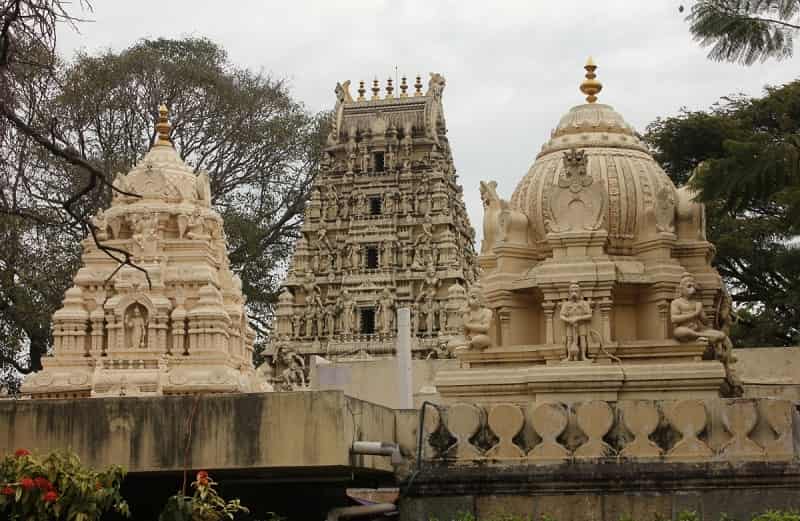
Halasuru Someshwara Temple, located in Ulsoor, is a popular tourist destination in Bengaluru. This place of high religious significance is dedicated to Lord Someshwara (or Shiva). This is the oldest temple of its kinds in the region and is attributed to the Chola period. The dates of the initial construction of this temple are not known. According to George Michell, the famous art historian, this complex witnessed some major renovations during the reign of Hiriya Kempe Gowda II; during the fag end of the Vijayanagara Empire period.
The plan of this temple follows quite a few elements of Vijayanagara style of architecture –albeit to a small extent. The sprawling precincts of the temple are home to a square sanctum (garbhagriha) which stands surrounded by a thin passage way. This sanctum is further linked to a closed mantapa (hall) that is visited for its sculptures in frieze and walls decorated with pilasters. You can also see an open mantapa that has four projecting “bays” and a 16th century structure in the form of a well executed eastern gopuram—enjoy!
Naganathaswamy Temple
- Address: Thirunageswaram, Kumbakonam 612 204 Thanjavur, Tamil Nadu
- Timings: All days of the week 5:00 AM – 12:00 PM 4:00 PM – 9:00 PM
- Visit Duration: 30 to 45 minutes
- Entry Fee: No Entry Fee
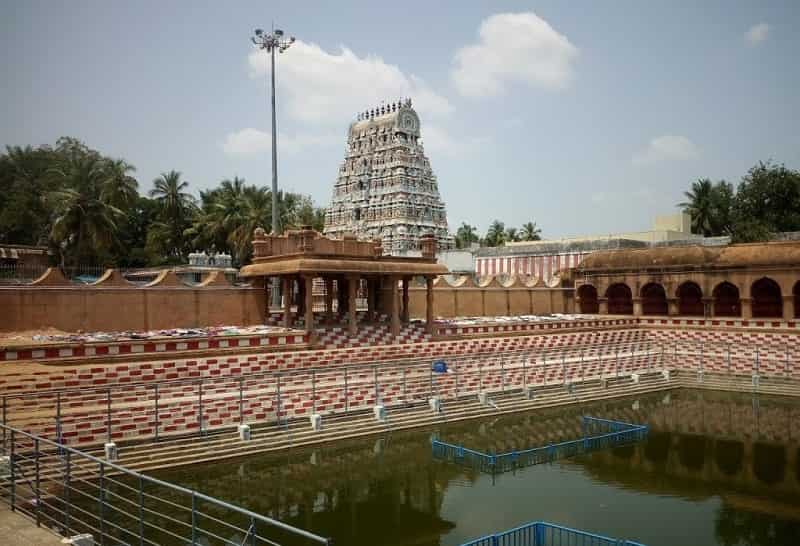
Legends claim that this is the spot where Rahu prayed to Lord Shiva. The Naganathaswamy Temple, Thanjavur is dedicated to Rahu and is very popular with people who come here to rid themselves of the Rahu Dosha. Popularly known as the snake temple, people offer milk by pouring it on the idol (milk Abhishekam).
Although you will find people here every day, the largest congregation is during the period of Rahukalam. It is claimed that the milk turns blue in color when offered during the Abhishekam. The temple itself is an impressive one, with carved pillars and a huge gopuram at the entrance. Close to this temple are the temples dedicated to Lord Shiva and Lord Ayyappa.
- Must Read: Most Famous Hindu Temples in Tamil Nadu
Karni Mata Temple
- Address: NH 89, Deshnok, Rajasthan 334801
- Timings: The temple can be visited on all days of the week from 5:00 AM – 10: 00 PM.
- Visit Duration: 1 to 2 hours
- Entry fee: No entry fee
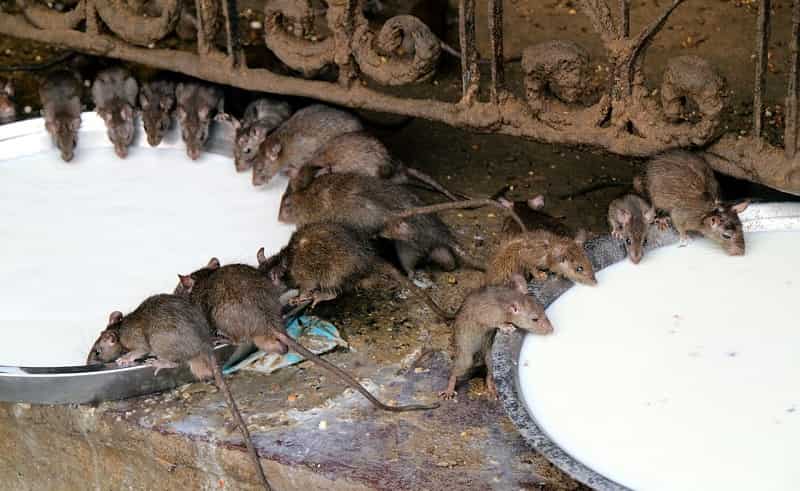
The Karni Mata temple is located in the city of Bikaner. As the name suggests the temple is dedicated to Karni Mata, a Hindu sage who was believed to be a reincarnation of Goddess Durga. As you visit this temple you will notice there are as many as 20,000 rats visible in this temple. The best time for visiting the temple is during the morning hours when you can attend the aarti and even do a Parikrama of the temple.
One can also see many huge saucers of milk which are being shared by a number of rats, which is quite a rare sight and is considered to be quite iconic of this temple. The temple is quite a prominent one and people especially come to seek the blessings of the sage, Karni Mata and offer prayers too!
Also Read: Most Famous Lord Vishnu Temples in India
Kamakhya Mandir
- Address: Kamakhya Mandir Road 781010 Guwahati, Assam
- Deity: Goddess Kamakhya Devi
- Timings: 6:00 AM – 6:00 PM
- Entry Fee: No Entry Fee
- Visit Duration: 1 to 2 Hours
Kamakhya temple is located in Guwahati, Assam over Nilachal Parvat or Kamagiri hill. This temple is dedicated to the eminent Hindu tantric mother goddess Kamakhya. Goddess Kamakhya is believed to be the essence of female energy. This temple is believed one the oldest Shakti Peeth of the 51 Shakti Pithas. The temple is destroyed by invaders in 16th century and rebuilt in 17th century by Emperor Nara Narayana of Cooch Bihar.
As per the stories of myths, it is prevalent that the presence of goddess Kamakhya is known from when the angry Lord Shiva carried the burnt corpse of Devi Sati and her yoni (female genital) fell at Guwahati on the spot of temple.
The Kamakhya temple is also known as a natural cave itself. It also has a sanctum sanatorium within an inscrutable and dark chamber. The festival which is celebrated annually with a great enthusiasm and zeal is Durga Puja in the month of September and October. And inspite of it one more festival known as Ameti or Ambubachi a type of fertility fest to pay homage to female energy or goddess Kamakhya is being celebrated at this place.
Virupaksha Temple
- Address: Bellary 583239 Hampi, Karnataka
- Deity: Lord Shiva
- Timings: 9:00 AM – 9:00 PM
- Visit Duration: 2-3 hours
- Entry Fee: Free
Virupaksha Temple is one of the oldest Hindu Temples in Hampi city. The central 50 m high gopuram was built in 1442. There’s a smaller one that was added to the structure in 1510. The main shrine is devoted to Lord Virupaksha who is an incarnation of Shiva. You can have the blessings of Lakshmi (the temple elephant) and her attendant in the form of a kiss in exchange of a coin. The lovely Lakshmi takes her morning bath at 8.30am at the river ghats.
Hemakuta Hill that lies to the south, overlooking Virupaksha Temple, features a few vestiges comprising monolithic sculptures of Ganesha and Lord Narasimha (reincarnation of Vishnu in man-lion form). There is a monolithic Nandi statue at the east end of Hampi Bazaar. The Nandi statue has the colonnaded blocks of the ancient marketplace standing around it. Matanga Hill overlooking the Nandi statue offers breathtaking views of the terrain at sunrise. The Vijaya Utsav festival takes place in January at the foot of the hill.
Chamundeshwari Temple
- Address: Chamundi Hills, Vijay Nagar, Mysore, Karnataka-570010
- Deity: Goddess Durga
- Entry Fee: No Entry Fee
- Timings: 7:30 AM – 9:00 AM
- Visit Duration: 1 to 2 hours
Situated atop Chamundi Hill, the popular Chamundi Devi temple is dedicated to Goddess Chamundi Devi which is yet another name for Goddess Durga. This goddess is known for her might and valor and is revered for killing the demon king Mahishasura, after a vicious battle. The entire hill is named “Chamundi Hill” to pay respects to her courage and victory. The temple was patronized by the rulers of Mysore who considered the Goddess as the guiding force behind all their acts.
It is believed that this temple was erected in 12th century by the rulers of the Hoysala dynasty and its inspiring tower was later added in the 17th century AD by the Vijayanagar royals. A major tourist attraction and a striking example of Dravidian architecture, this -storey tall temple is flush with intricate carvings and popular for its temple doors crafted in silver and the main idol made from pure gold.
After climbing 1,008 steps, you reach the tranquil precincts of the main complex of the Chamundi Devi temple. On the 800th step on the hill, you will also come upon a large Nandi bull statue, made from a huge chunk of black granite. Here, you can also pay your reverence at an ancient temple dedicated to Lord Shiva located at a short distance away. A mammoth statue of the demon king, holding a cobra in one hand and a sword in another is another highlight of this sightseeing venue. Famous for its Teppotsava festival, the temple attracts huge crowds, across the year.
Siddeshwara Temple
- Address: Hanamkonda, Warangal, Telangana
- Deity: Lord Shiva
- Timings: All days of the week 6:00 AM – 6:00 PM
- Visit Duration: 15-30 minutes
- Entry fee: No entry fee
With its entrance facing the west, the Siddeshwara Temple is among one of the very few Paschimdwara Mukha Temple. Well known for its splendid carvings on the pillars and its magnificent architecture, the temple comes to its own during the Maha Shivratri festival when thousands of devotees flock to this place.
Lotus Temple
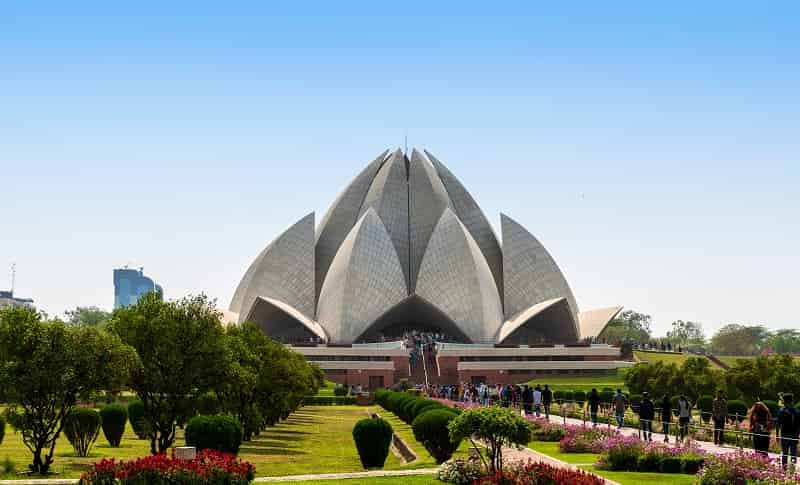
Delhi, the capital of India, carries a long list of travel attractions. Among all, the Lotus Temple is one of the most popular attractions that travellers don’t want to miss it. The temple is a symbol of one of the most difficult architectures of India. If you see this beautiful temple from top, it seems a giant white lotus. There is a large landscape (26 acres) surrounded the temple that has been taking care by the followers of Baha’i, a religion. Also, the Delhi government is taking care of this beautiful temple.
Architecture
The architecture of the temple is magnificent. It is world famous for its unique shape and has won various awards for its uniqueness. Many newspapers and travel magazines have been featured this temple rich quality architecture. According to Wikipedia, the architecture of this beautiful temple was designed by an Iranian-Canadian Baha’i architect, Fariborz Sahba. The structural engineer of this precious treasure was Flint & Neil. The structural materials are concrete ribbed roof, concrete fame, marble, iron and bronze. The wall contains no pictures and designs. Alter is also very simple. It seems that Baha’i culture believes in simplicity. The height is 34.27 metres. The temple has capacity to hold 2,500 people at a time.
- Address: Post Shambhu Dayal Bagh, Bahapur, Kalkaji 110019 Delhi
- Timings: Oct-Mar: 9:00 AM – 5:00 PM & Apr-Sept: 9:30 AM – 6:00 PM, closed on Monday
- Visit Duration: 1 to 2 hours
- Entry Fee: No Entry Fee
Chaturshringi Temple
- Address: Senapati Bapat Rd, Chaturshringi Pune-411016, Maharashtra
- Timings: 7 am – 9 pm
- Visit Duration: 30 minutes to 1 hour
- Entry fee: No entry fees
Among many religious attractions of Pune, the Chaturshringi Temple is one of the most popular ones. It is located on the slope of a hill on Senapati Bapat Road, Pune. The temple has a glorious legend. According to the legend, the temple was made by an ardent believer of Goddess Chaturshringi. One night, the Goddess appeared in his dream and indicated to come to a mountain, situated in the North-West of Pune and dig there. He followed the dream where he fortunately found the statue of the Goddess. He converted the place into a temple.
The temple receives heavy footfalls every year. It is under the observation of the Chaturshringi Devasthan Charity. It has been renovated many times. The temple height is 90 feet and 125 feet width. There are 100 steps to reach to the temple. It is a beautiful Hindu shrine that has many idols of Hindu God Lord Ganesha and Goddess Durga.
Dagadusheth Halwai Ganapati Temple
- Address: Mehunpura, Budhwar Peth, Pune, Maharashtra 411002
- Deity: God Ganesha
- Timings: 7 am – 9 pm
- Visit Duration: 30 minutes to 1 hour
- Entry fee: No entry fees
Dagadusheth Halwai Ganapati Temple is one of the most famous temples in Maharashtra. The temple is dedicated to Lord Ganesha. It is far from the city Pune. It is located near the historical Shaniwar Wada fort. The temple is visited by thousands of devotees of Lord Ganesha every year. Many prominent personalities like film stars and Prime Ministers come to the temple every now and then. It is believed that the idol of Lord Ganesh is around RS 1 Crore.
According to the history of the temple, it was established in 1893 by a wealthy businessman. Currently, the temple is under the observation of the Halwai Ganapati Trust. The trust is running an old age home. The temple main attraction is the idol of Ganesha that is decorated using different expensive jewellery. When you are on the way to Shaniwar Wada, you can visit the temple too.
Bhimashankar Temple
- Address: Khed, District Pune, Maharashtra 410509
- Deity: Lord Shiva
- Timings: 4 am – 9 pm
- Visit Duration: 1-2 hours
- Entry fee: No entry fees
Bhimashankar Temple is a shrine of the most powerful God of Hindu, Lord Shiva. It is located 50 km northwest of Rajgurunagar the subdivision of Pune. It is strategically located at 127 km from Shivaji Nagar of the Sahyadri Hills. A holy river “Bhima” is the source of Bhimashankar. Maharashtra has many shrines of Lord Shiva—apart from Bhimashankar, Ellora, Nasik and Aurangabad are some places where a Lord Shiva shrine is situated. The temple is a prime attraction of Hindu citizens who come to the shrine for worship.
According to archaeologists of India, the temple was made in the 13th century. Its extension “Sabhamandap” was made in the 18th century. There are many tales related to this temple. It is believed that Shivaji (the leading king of Maharashtra during 16th century) come to the temple regularly to worship the powerful god Shiva. The place is surrounded with greenery it houses wide varieties of birds, animals and rare plants that make your trip to this destination exciting…
ISKCON Temple, Mumbai
- Address: Malabar Hill, Mumbai, Maharashtra
- Deity: Krishna and Balarama
- Timings: 4:30 am – 9 pm
- Visit Duration: 1-2 hours
- Entry fee: No entry fees
ISKCON temple in Mumbai is one of the biggest attractions of Mumbai. The temple attracts foreigners who worship Hindu God, Lord Krishna. ISKCON stands for International Society of Krishna Consciousness that established the ISKCON temple in 1978 in Mumbai. The temple is also famous as the ISKCON enchanting mantra “Hare Rama Hare Krishna” Temple.
It has beautiful statue of Lord Krishna. The temple is situated near Juhu Beach and spanning over 4 acres of area. The morning 7:15 drives a heavy crowd to the temple due to Sringar Darshan (Krishna is decorated with lots of fresh flowers). The temple has a guest house that can be used by visitors and by life members. The evening time during Sandhya Aarti, many travellers and followers gathers to worship Lord Krishna. The place is good to found calmness. It is just 20 mins to Andheri Station.
Shri Mata Sheetla Devi Temple
- Address: Near the Gurgaon Railway Station Gurgaon, Haryana
- Deity: Goddess Shitala
- Timings: 5:00 am – 9 pm
- Visit Duration: 30 minutes to 1 hour
- Entry fee: No entry fees
Dedicated to Mata Sheetla Devi and also famous as Shakti Peeth, this temple in Gurgaon is always occupied with devotees throughout the year; except in the month of July to August, which is the Hindu month of Shravana. In the month of Chaitra, March-April, this temple is thronged by worshippers of the goddess. This particular temple in Gurgaon is located near a holy pond. Many people especially come to visit this temple and the take the blessings of the supreme goddess.
Many legends and myths are associated with the construction of the temple and seem to fill the devotees with a sense of spirituality. The goddess, Mata Sheetla Devi is believed to have the power for curing diseases, especially small-pox. The idol of the goddess in this temple is made up of metal and coated with gold. An annual mela known as the “Masani fair” is also held in Gurgaon near the temple in honor of the goddess. This place can be visited at
Chettikulangara Devi Temple
- Address: Chettikulangara, Mavelikara, Kerala 690106
- Deity: Sree Bhadrakali
- Timings: 6:30 am – 8:30 pm
- Visit Duration: 30 minutes to 1 hour
- Entry fee: No entry fees
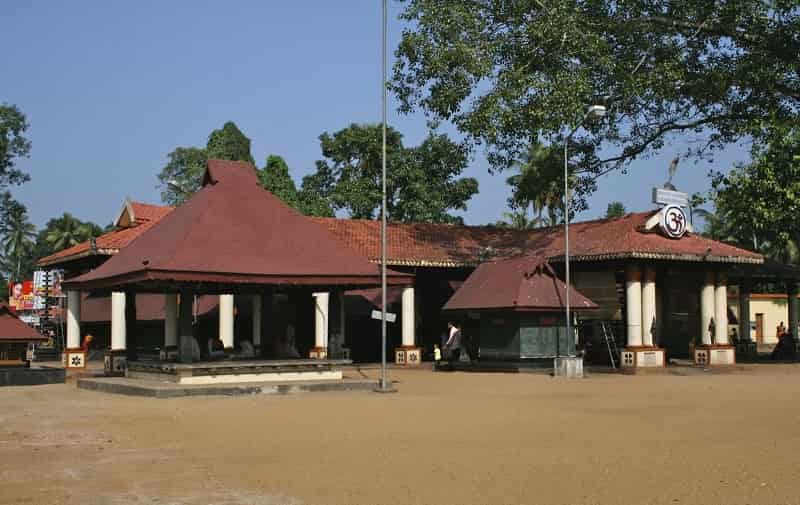
One temple and many faces. The Chettikulangara is a unique temple located in the Alappuzha ditrict of Kerala earlier known as Alleppey. The unique feature of the temple is that if you go there in the morning you can pay your ode to Goddess Saraswati, if you go in the afternoon the same idol appears to be of Goddess Lakshmi and in the evening a deity is greeted by Sri Durga and Bhadrakali.
There have been talks going on to include this unique temple in the UNESCO World Heritage Site. This is the second largest temple when it comes to the earnings. There are devotes from all over the globe who donate offerings for the goddess and this money is used to run the everyday rituals of the temple that fall under the Travancore Devaswom Board.
Modhera Sun Temple
- Address: Mehsana – Becharaji Rd, Highway, Modhera, Gujarat 384212
- Deity: Lord Surya
- Timings: 7:00 am – 6:00 pm
- Visit Duration: 1-2 hours
- Entry fee: 25 INR for Indians, 300 INR for Foreigners
The beautiful Modhera Sun Temple was built was King Bhimdev in the years of 1026 and 1027. The temple was a part of the important works in the Solanki rule. The Solanki rulers were believed to be descended from the sun and therefore they build sun temples. Unfortunately the temple was somewhat sacked by the Delhi Sultanate rulers around 1300 but it remained very impressive even after that.
There are a number of carvings on the exteriors of the temple depicting demons and deities. The decorations of the temple are very impressive too. There is an image of Surya which was designed so that when the sun rises, it could through its rays on the image. The temple is important from both historical and spiritual point of views and is a centre of attraction for many tourists.
Bull Temple and Dodda Ganesha Temple
- Address: Bull Temple Road, Basavanagudi, Bangalore
- Deity: Nandi and Lord Ganesha
- Timings: 6:00 am – 9:00 pm
- Visit Duration: 1-2 hours
- Entry fee: Free
The Bull Temple, which was constructed by Kempegowda in the 16th-century, lies about a kilometer away from the Tipu Sultan’s Palace and reflects a Dravidian style or architecture. It is Bengaluru’s most atmospheric temples and houses a giant monolith of Nandi, made up of granite. Lying close to the Bull Temple is the Dodda Ganesha Temple which is built on Bull Temple Road (Basavangudi) and has an equally huge idol of Lord Ganesh. The temple is open between 7am and 8.30pm.
Madmaheshwar Temple
- Address: Gaundhar, Uttarakhand 246439
- Deity: Lord Shiva
- Timings: 6:00 am – 7:00 pm
- Visit Duration: 30 minutes
- Entry fee: No entry fee
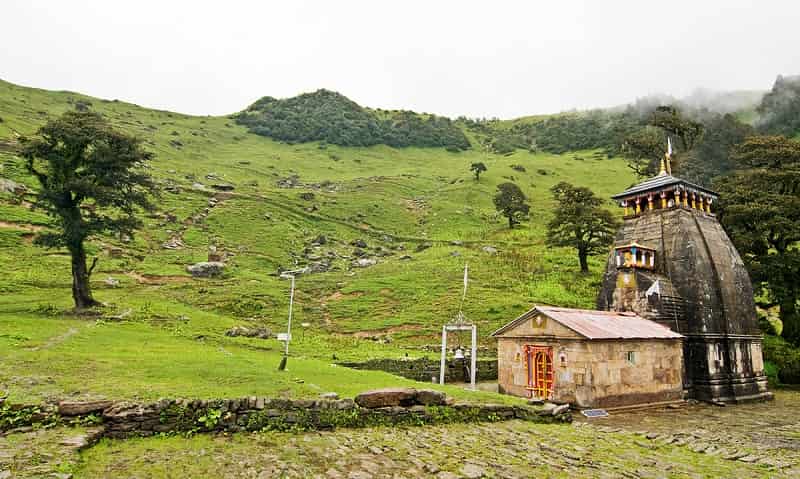
Madmaheshwar is a temple dedicated to the Hindu God Shiva and is located in the Mansuna village in Garhwal Himalayas in Uttarakhand, India. Madmaheshwar is located at an altitude of 3625metres above sea level. Not many people are aware that this temple is one of the four temples in the Panch Kedar, the holy pilgrimage of the Hindu’s. The trek is quite well known and covers a distance of 36 kms. The trek begins from Bantoli and ends at Unaina. The trek covers a stretch of 21 kms. While trekking you can also visit Kanchani Tal, which is beautiful place worth visiting, and is located at a distance of 16kms from Madmaheshwar.
Sri Ramnath Temple
- Address: Ramnathim, Ponda, Goa 403401
- Deity: Lord Shiva
- Timings: 5:00 am – 8:00 pm
- Visit Duration: 30 minutes
- Entry fee: No entry fee
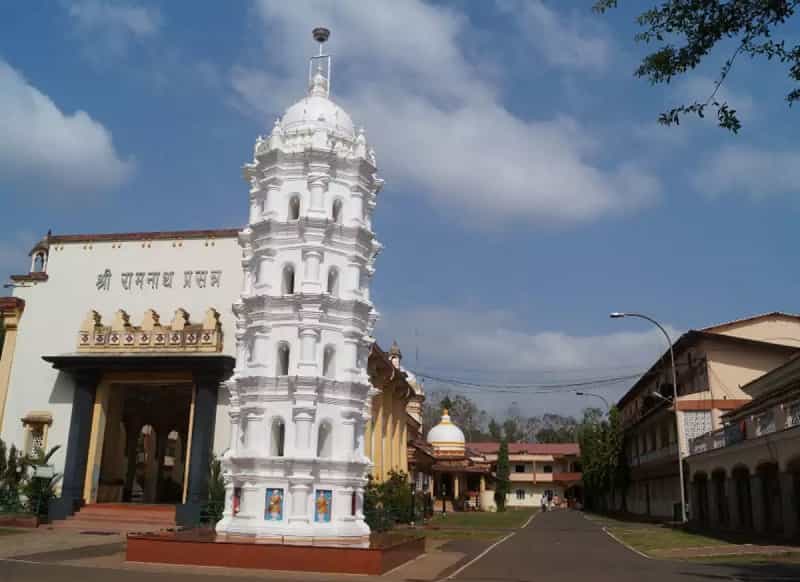
It is one of popular temples in Goa and a religious center for Hindu Brahmin community. It has its connection to 3000 BC when Lord Rama, according to myths, had offered his prayers here. Fearing Portuguese invasion, the main idol was brought here from Loutolim. The other idols inside the temple premises include Shri Ganesha, Shri Betal, Shri Laxminarayan, Shri Kalbhairav, and Goddess Kamakshi. Standing at the Entrance is a huge lamp-stand or deepstambh, something you can’t afford to miss.
Shri Mahalaxmi Temple
- Address: Donshiwado, Bandora, Ponda-403404, Goa
- Deity: Goddess Mahalaxmi Devi
- Timings: 6:00 am – 8:30 pm
- Visit Duration: 30 minutes
- Entry fee: No entry fee
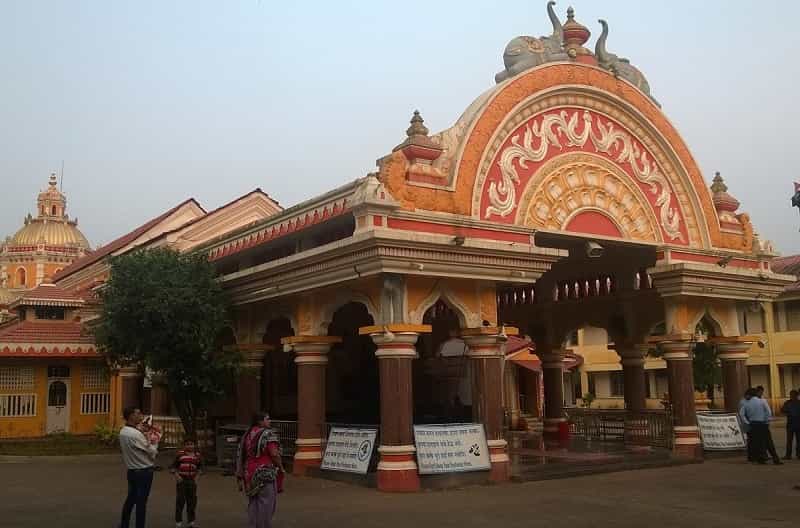
Shri Mahalaxmi Temple (Goa) which is believed to be the real house of Shakti’s cult is famous for housing the biggest galleries that showcase wooden paintings of Lord Vishnu. There is a unique thing about the temple that is the idol of Mahalaxmi Devi has a Linga on its head. The temple has the India’s largest gallery that contains wooden images of Lord Vishnu. The temple also impresses its devotees with its magnificent main square of chowka, something you would have rarely seen anywhere else.
Laxmi Narasimha Temple
- Address: 3 Km from Mardol, Veling 403401 Ponda, Goa
- Deity: Lord Vishnu and Goddess Laxmi
- Timings: 6:30 AM – 8:30 PM
- Visit Duration: 30 minutes
- Entry Fee: No entry fee
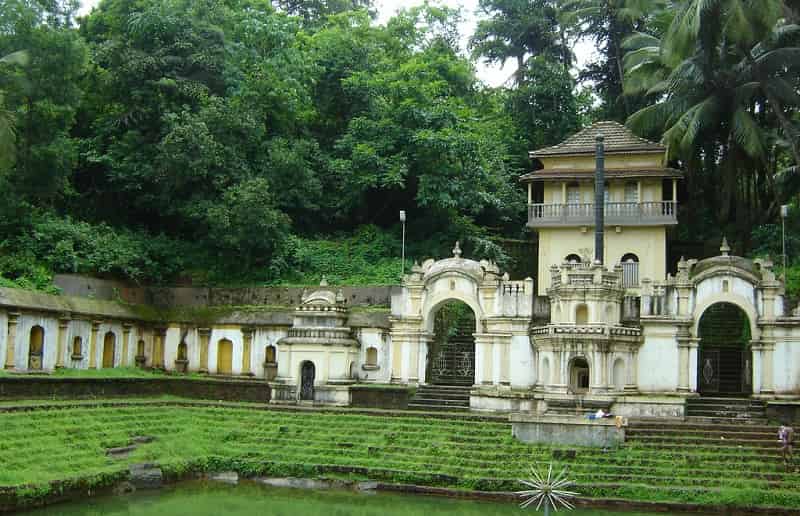
The Laxmi Narasimha temple was initially located in the Sankhavali and was later on moved in with the other deities like those of Sri Vijayadurga and Sri Shantadurga to its current place of the Sylvan surroundings. The temple is very old and was built in the 18th century and as the name suggests the temple is dedicated to the Hindu God, Vishnu and Goddess Laxmi. The temple still retains its old charm quite unlike the other Hindu temples in Goa.
Sri Mahalasa Temple
- Address: Mardol 403404 Ponda, Goa
- Deity: Shri Mahalasa Narayani
- Timings: 6:30 AM – 8:30 PM
- Visit Duration: 30 minutes
- Entry Fee: No entry fee
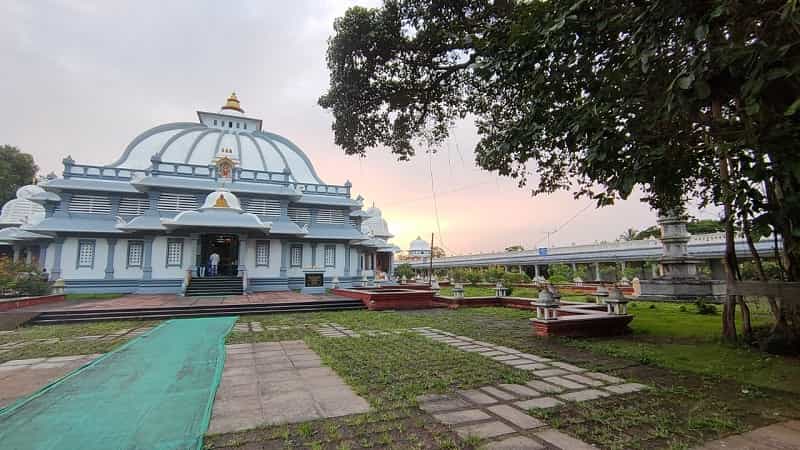
Sri Mahalas temple is one of the most famous temples in Goa. One should definitely visit this place to seek divine blessing of Goddess Mahalasa. This temple is located in Mardol, Goa and also is called Mahalasa Narayani temple. Mahalasa is believed to be Mohini Avatar of Vishnu.
This is a very beautiful temple and the most striking feature of the temple is its 7 storied Deepstambha (lamp tower) which is located on the front of the temple. This lamp tower looks really amazing when it is fully lit at festival times. The most important festival celebrated here is annual Mardol Jatra (in the month of Feb) and the other are Jaiyanchi Puja (around month of august) and Kojagiri Purnima. Apart from the main Mhalasa deity, this temple also houses idols of many other deities. Behind this temple also lies a sacred pond which is held in great esteem by the devotees. So come and breathe into the sacred environs of this pilgrimage.
Varahaswamy Temple
- Address: North Mada Rd Tirumala-517504, Andhra Pradesh
- Deity: God Varaha
- Timings: 5:00 AM – 9:30 PM
- Visit Duration: 30 minutes – 1 hour
- Entry Fee: No entry fee
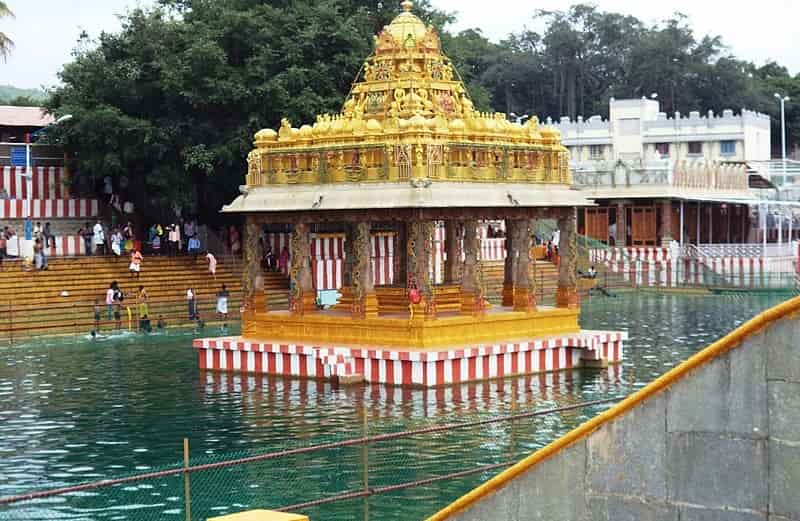
Located on the banks of Pushkarini River, Varahaswamy Temple is a temple dedicated to the Varaha incarnation of Lord Vishnu. Varaha is believed to be the guardian of the Tirumala Hills. The temple faces the more prominent Sri Tirumala Venkateswara Temple in Tirumala. The legend has it that Lord Venkateswara was able to stay in Tirumala (originally a Varaha Kshetra or the abode of Sr Adi Varaha Swami) with the permission of Sri Adi Varaha Swami. Therefore, devotees visit to the famous Venkateswara Temple only after visiting this temple and offering ‘naivedyam’ here.
In the Vaikhanasa Agama texts, the description of Adi Varaha resembles the description of the Adi Varaha Murti due to which the idol of Lord Varahaswami in Tirumala is same as the Adi Varaha’s.
Veerabhadra Temple
- Address: Anantapur, Lepakshi – 515331, Andhra Pradesh
- Deity: Virabhadra, (Incarnation of Lord Shiva)
- Timings: 5:00 am to 9:00 pm
- Entry Fee: No Entry Fee
- Visit Duration: Around 1-2 hours
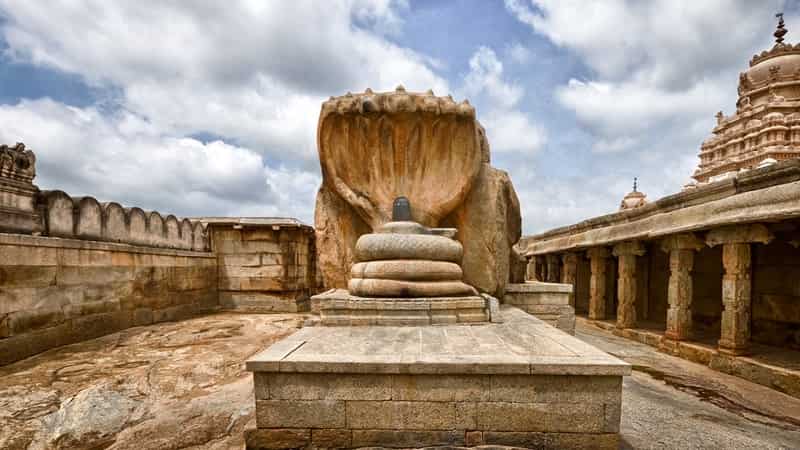
Veerabhadra Temple which is also known as Lepakshi temple is one of the inscrutable temple situated in Anantapur district in southern Andhra Pradesh. The temple has 70 enormous pillars constructed in Vijayanagara style. But one of those pillars is special as it does not touch the ground and dangling with the ceiling. The main attraction of this pillar is that this pillar is leaving an observable gap through which the visitors of this place can pass a piece of cloth. Till now no one is able to find the mystery behind this pillar; not even engineers.
The temple is embellished with beautiful carvings of Gods, Goddess, musicians and dancers. And it has a large photograph of Veerabhadra which is made by Lord Shiva.
- Suggested Read: Famous Hindu Temples In Andhra Pradesh
Nandikeshwar Temple
- Address: Bargi Dam Rd, Harduli, Jabalpur, Madhya Pradesh
- Deity: Lord Shiva
- Timings: 6:00 am to 8:00 pm
- Entry Fee: No entry fee
- Visit Duration: Half a Day
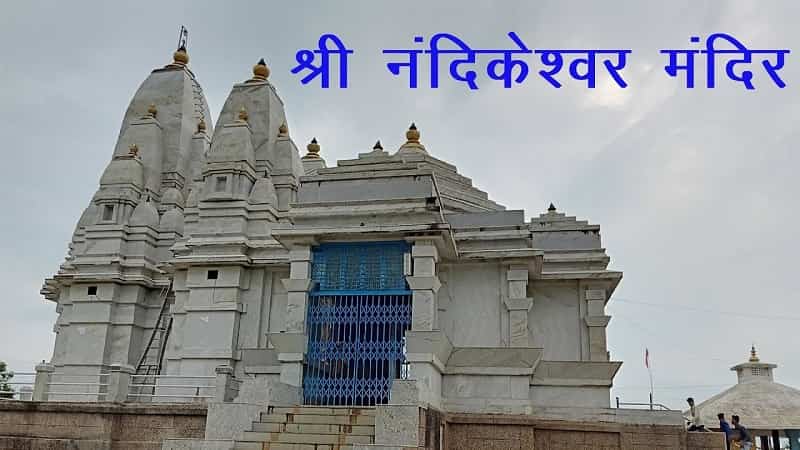
Nandikeshwar Temple is located over the hilltop of Bargi which is about 2 to 3 Km. away from the Bargi Dam in Jabalpur, Madhya Pradesh. This temple is dedicated to the conveyance of Lord Shiva Nandi. The structure of this temple is so fascinating that one cannot miss it if they are traveling to Bargi Dam or Jabalpur. The temple is worth to visit within half a day as it has a quite calm and mild environment. One can explore a soothing view of Bargi Dam from this temple and can have memorable photographs of its splendid beauty.
Salasar Balaji Dham Temple
- Address: Sujangarh Taluk of Churu District, Rajasthan
- Deity: Lord Hanuman Ji
- Timings: 4:00 am to 10:00 pm
- Entry Fee: Free for all
- Visit Duration: 1-2 hours
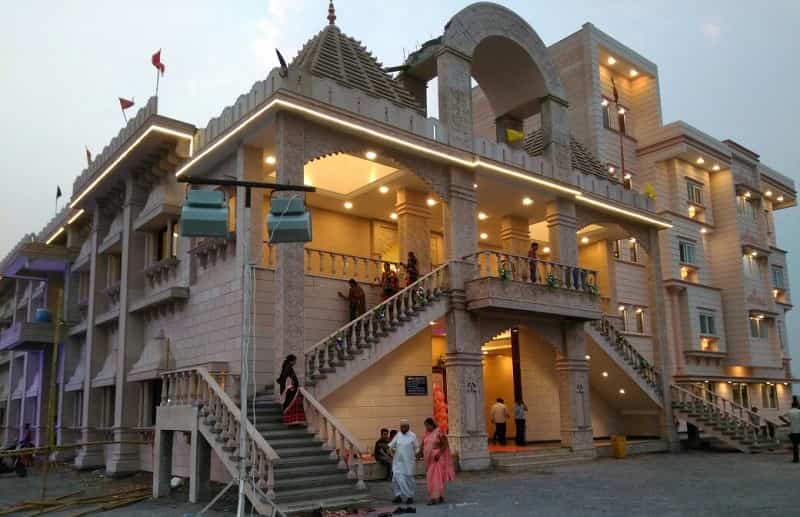
Salasar Balaji Dham Temple is a religious place for ardent devotees of Lord Hanuman Ji. This temple is situated in Salasar town on NH-65 near Sujangarh in Churu District, Rajasthan, built in 1754 AD or Samvat 1811. The nearest holy temples to this temple are Khatushyam ji Temple and Rani Sati Temple.
An uncountable worshipers of Lord Hanuman visit this place throughout the year. But this place is much crowded at Chaitra Purnima and Ashvin Purnima. This temple is eminent because it is believed as a place of power, a place where the wishes of devotees fulfilled and miracles happens etc.
In this temple the idol of Balaji which is known as one of the names of Hanuman ji. The specialty of idol is that it is only a head without body having moustache, beard, pair of eyes that are very much alive and attractive than a living men. The whole Dham is filled with the pictures of Lord Ram and Lord Hanuman engraved with gold and silver on the pillars and walls.
The story behind this temple is that in samvat 1811 a Ginthala Jat farmer found an idol of Lord Hanuman while he was ploughing his field. And this news spread in whole Asota village. The thakur of that village got the news. It is believed that at that night the Lord Balaji ordered him to place the idol in Salasar, Churu district in his dream. Then the thakur obey the order and sent the idol at that place.
Bajreshwari Devi Temple
- Address: Kangra Centre Kangra-176001, Himachal Pradesh
- Deity: Goddess Vajreshwari (A form of Goddess Durga)
- Timings: 6 am – 8 pm
- Entry Fee: No entry fee
- Visit Duration: 1 hour
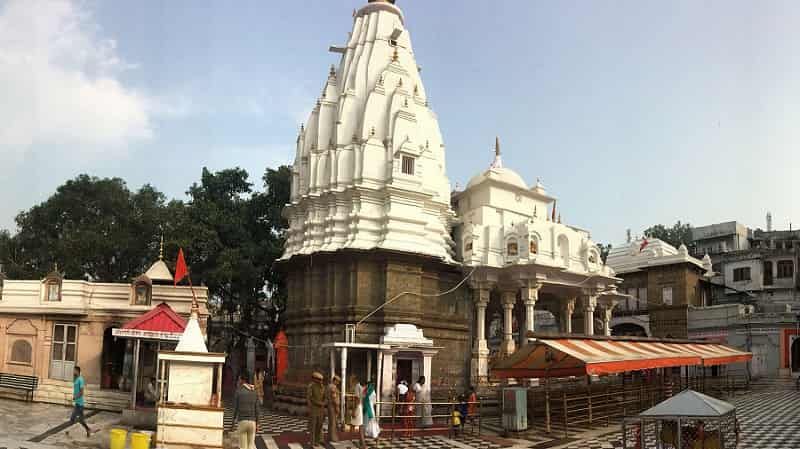
This famous temple lies in the Kangra district in the Kangra town and is counted among the 51 Shakti-Peeths in the country. This temple at one point of time was famous for its wealth and resources and was completely destroyed by Northern invaders. In the year 1905 there was a devastating earthquake which all but completely destroyed the temple and it had to be rebuilt in the year 1920 and has continued to be a place of religious interest ever since. Not far from this temple are located the Kangra fort which is about 3 kms. away and also the Jayanti Debi temple which lies on the hill opposite to the one where the fort is located.
Chamunda Devi Temple
- Address: 15 kms from Dharamshala, Kangra-176215, Himachal Pradesh
- Deity: Shri Chamunda Devi (A form of Goddess Durga)
- Timings: 6:00 am – 8:00 pm
- Entry Fee: No entry fee
- Visit Duration: 1 hour
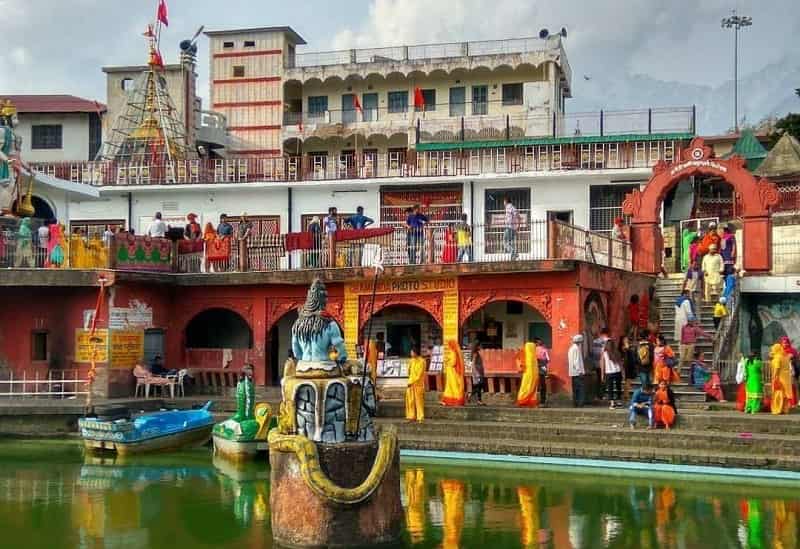
Chamunda is a form of Devi or the mother Goddess according to Hindu texts and it is actually an abbreviated form of Chanda and Munda who were monsters killed by the goddess. This famous temple is situated in Kangra in Himachal Pradesh and lies at a distance of about 10 kms from Palampur. According to mythology a Brahmin and a King prayed to the goddess about 400 years back to shift the temple to some place which could be accessed easily. The priest later saw the goddess in his dreams and she told him to dig at a certain site where they would find an idol which should be placed in the temple and worshipped.
The king sent his men to dig the idol up which they did but could not move it. So the priest again dreamt and the goddess told him that since it was a holy relic he should be the one to wake up, take a bath, wear new clothes and only then could he pick up the stone alone and place it where it was supposed to. This was considered as the will of the goddess and since then the idol is being worshipped at its present location.
Hadimba Devi Temple
- Address: Siyal, Manali, Himachal Pradesh 175131
- Deity: Goddess Hadimba
- Timings: 8:00 AM – 6:00 PM
- Entry Fee: No entry fee
- Visit Duration: 1 hour
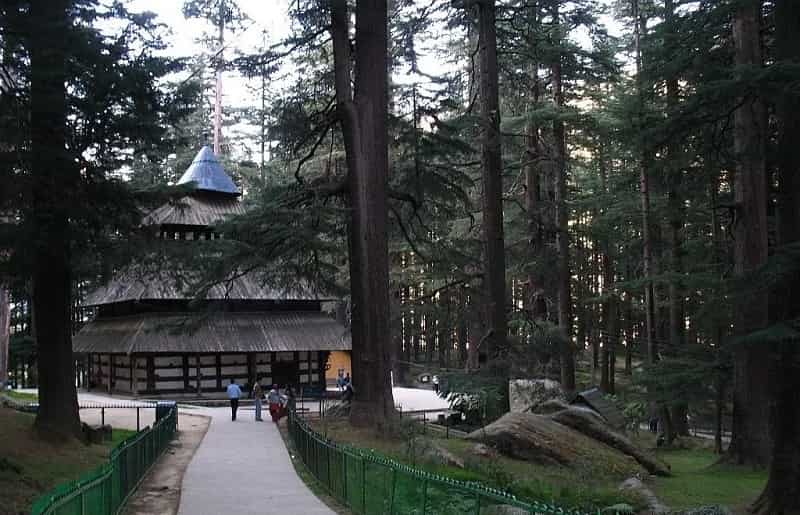
The Hadimba Devi Temple is located in the town of Manali in the Indian state of Himachal Pradesh. Manali is a very prominent hill station of Northern India and is visited by lakhs of people every year, The Hadimba Devi temple is a very old temple which was dedicated to the Hidimbi Devi, sister of Hidimba, wife of Bheem, during the time of Mahabharata. The temple was built in the year 1553. The Hidimba Devi temple is actually built around a cave where Hidimba meditated.
The Temple has very intricately carved wooden doors and a wooden Shikhar which is 24 meters tall right above the sanctuary. There are three square roofs above the tower which are covered with timber tiles and a fourth brass cone-shaped roof at the top. One can see image of goddess Durga which is the theme of the main door. Many people visit this temple al throughout the year.
- Suggested Read: Famous Hindu Temples in Himachal Pradesh
So these were some of the religious and ancient temples of India. Surely, India is a huge country with lots of diverse culture and religion. To sum up it in such a small piece of information is not possible. But still, we have tried our best to provide you with accurate information.
